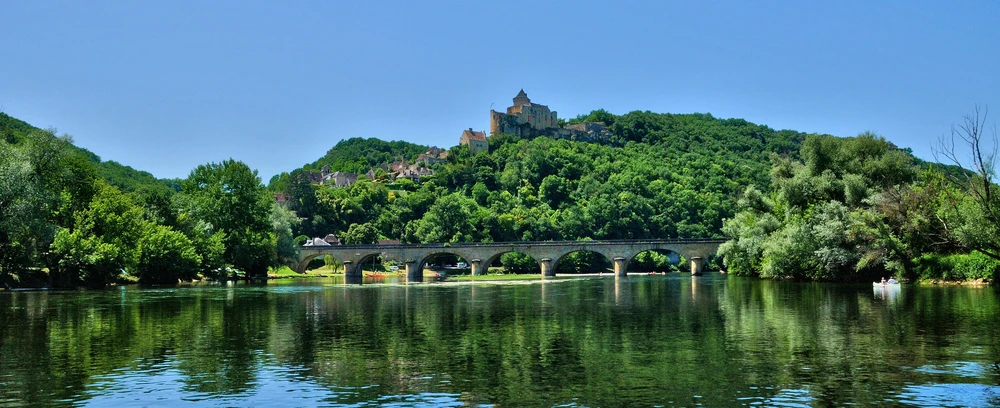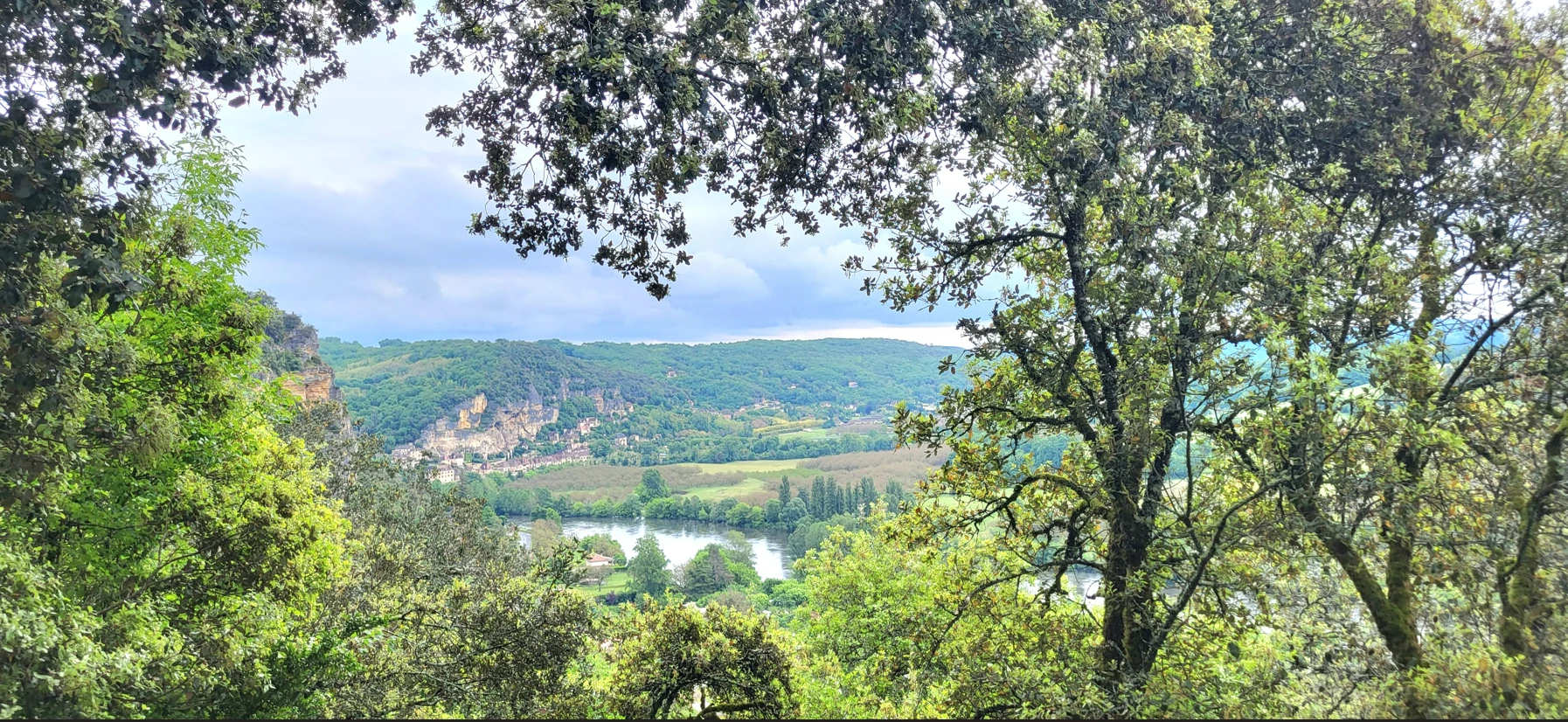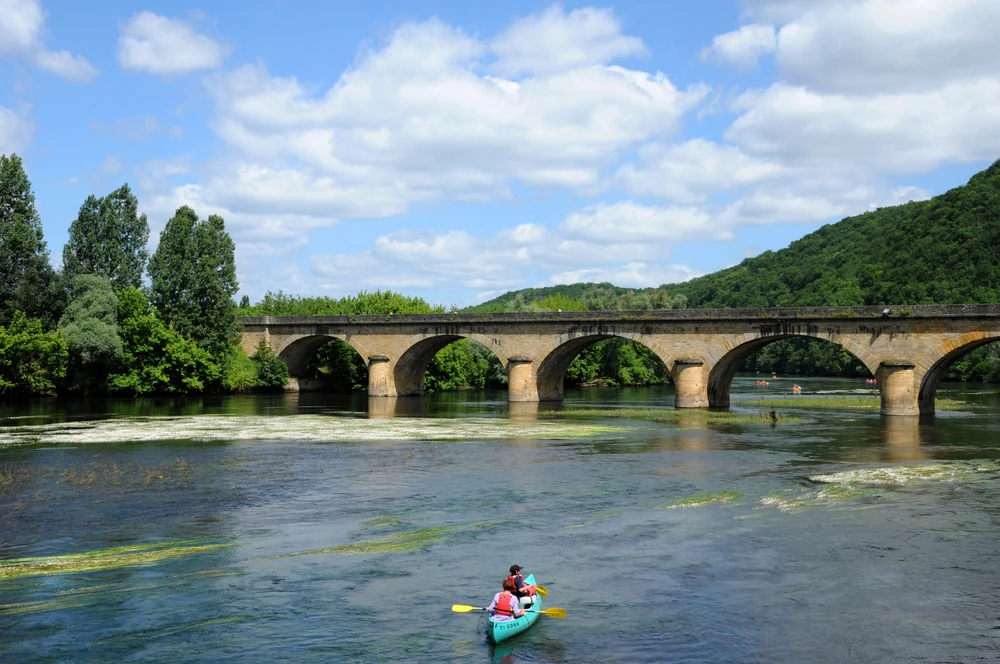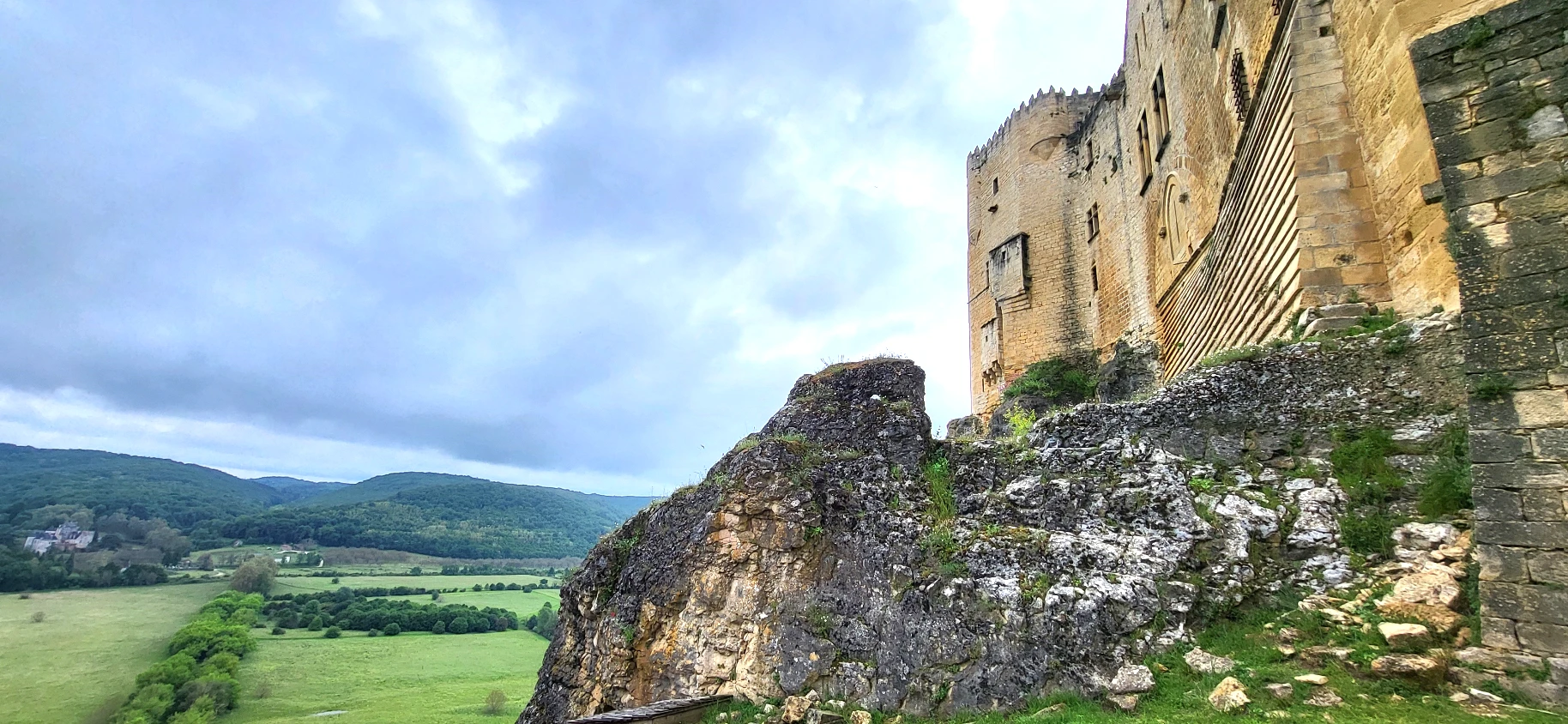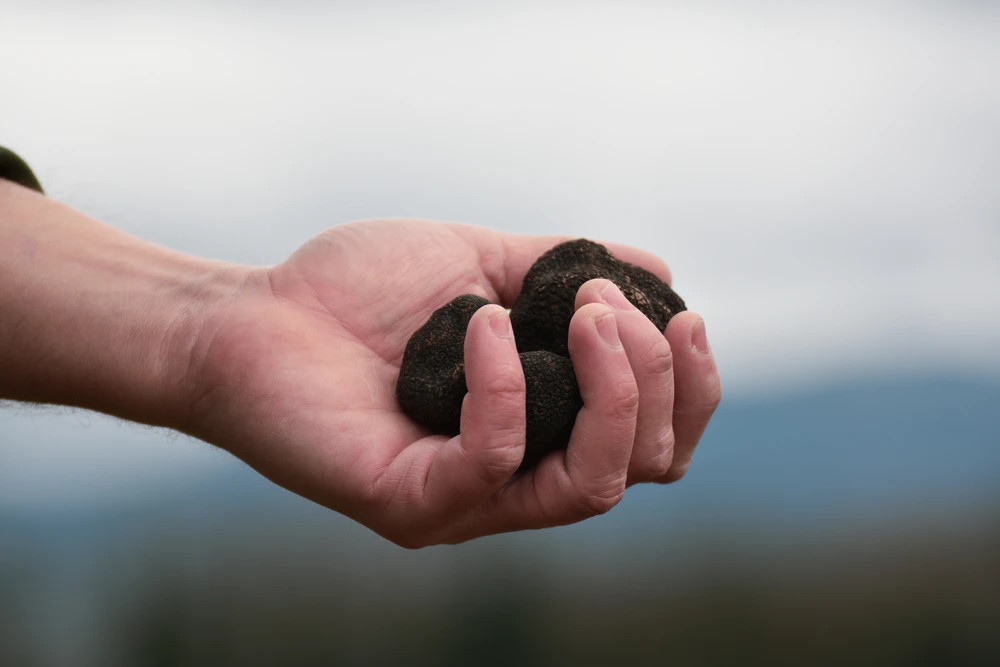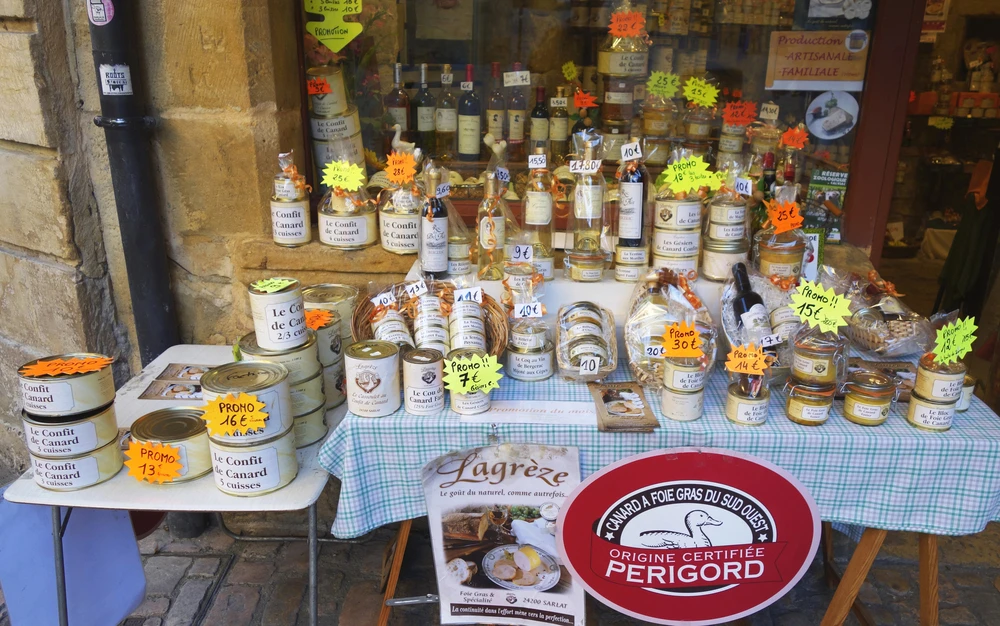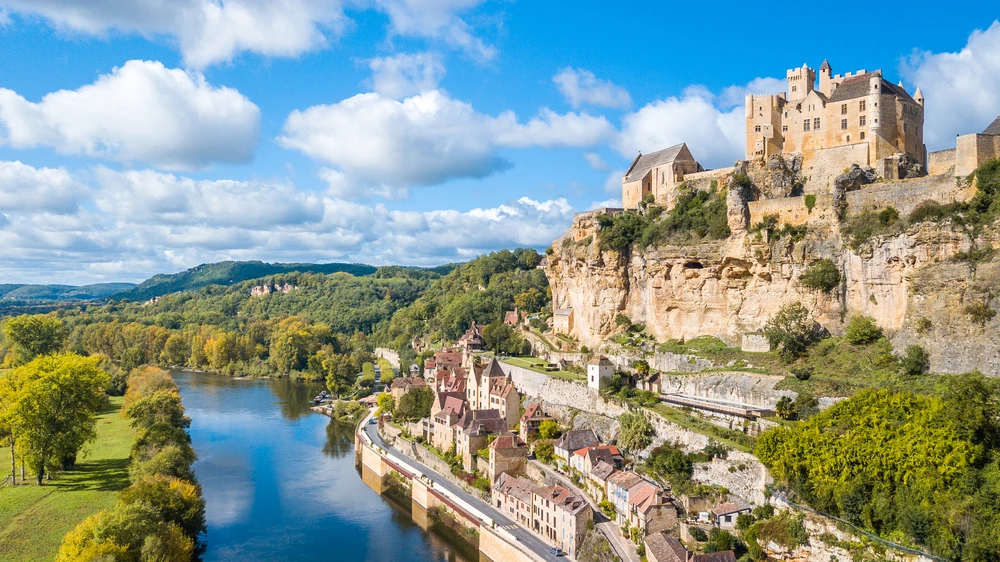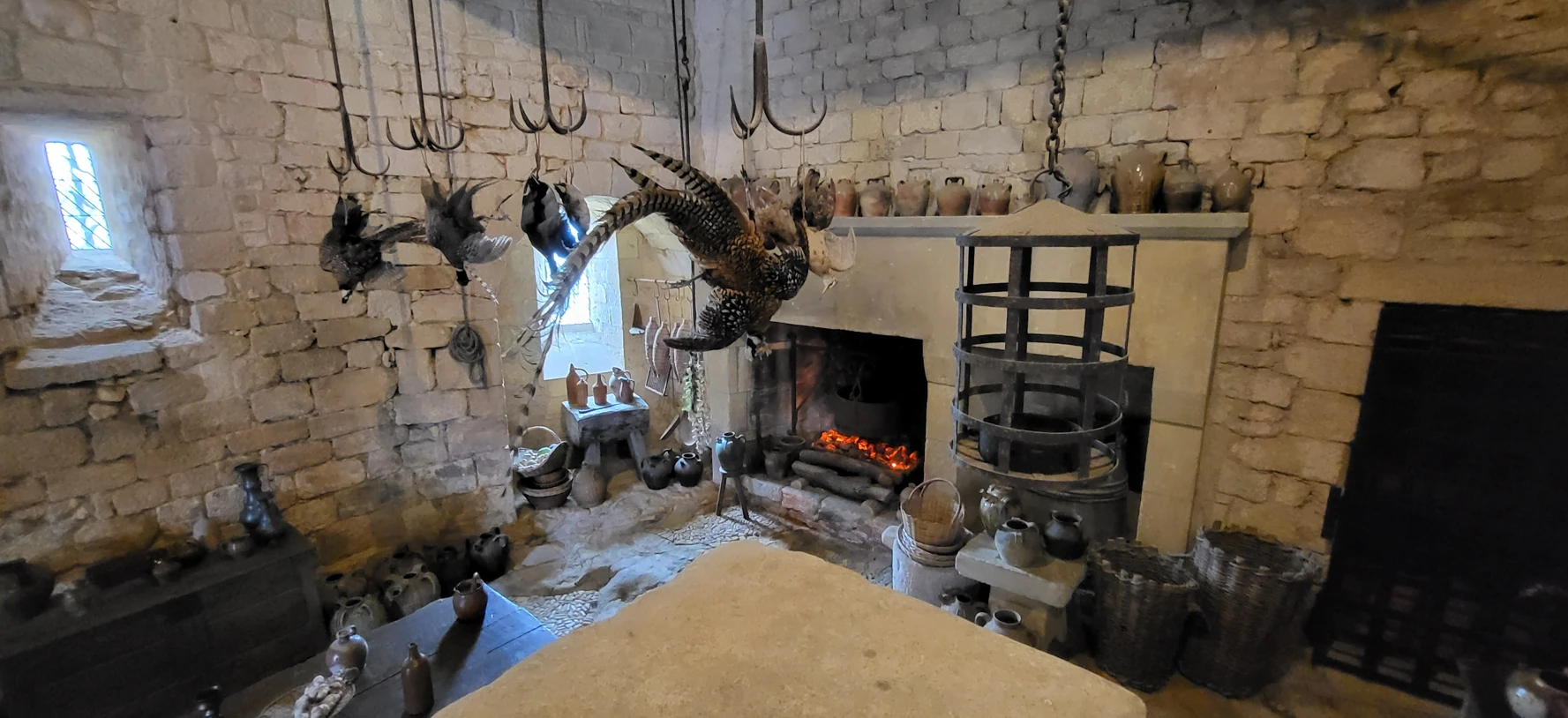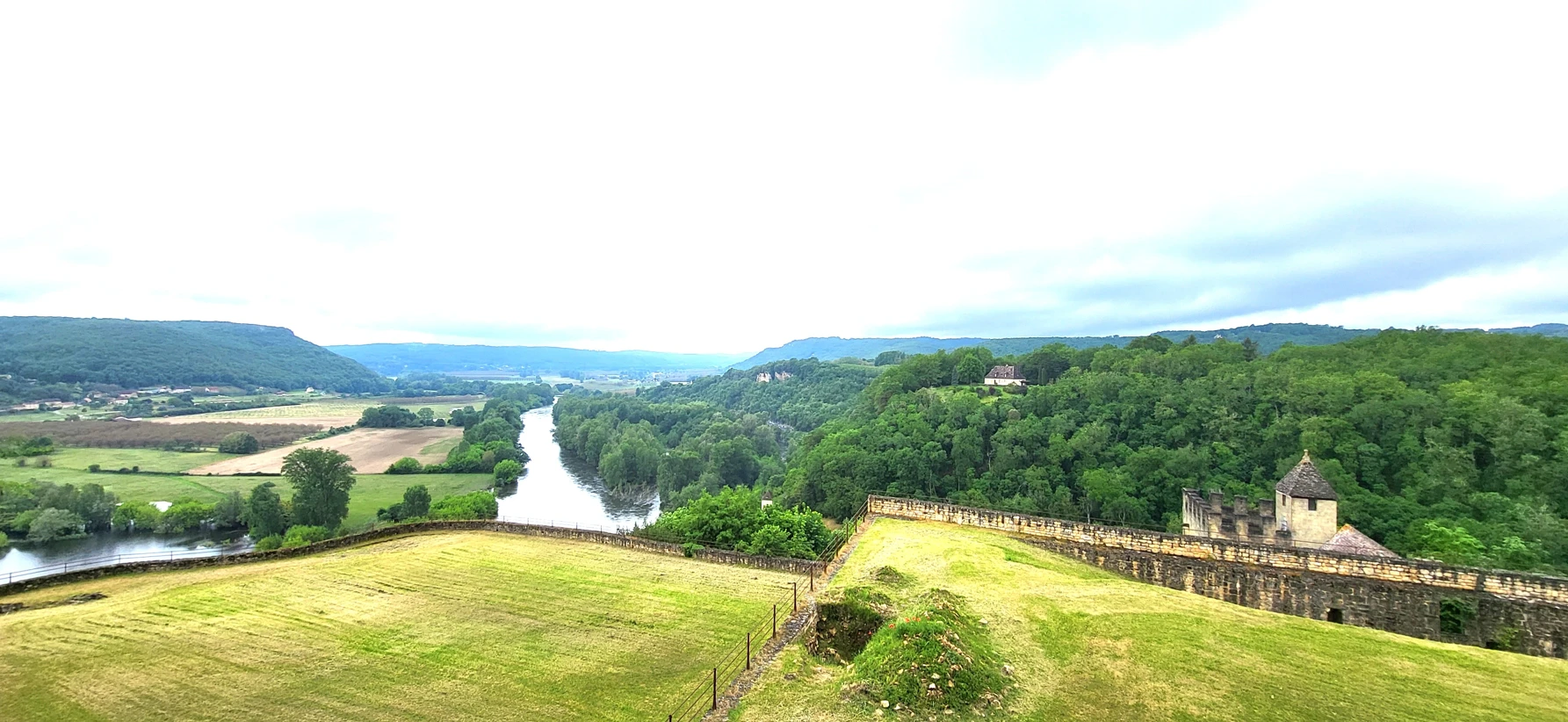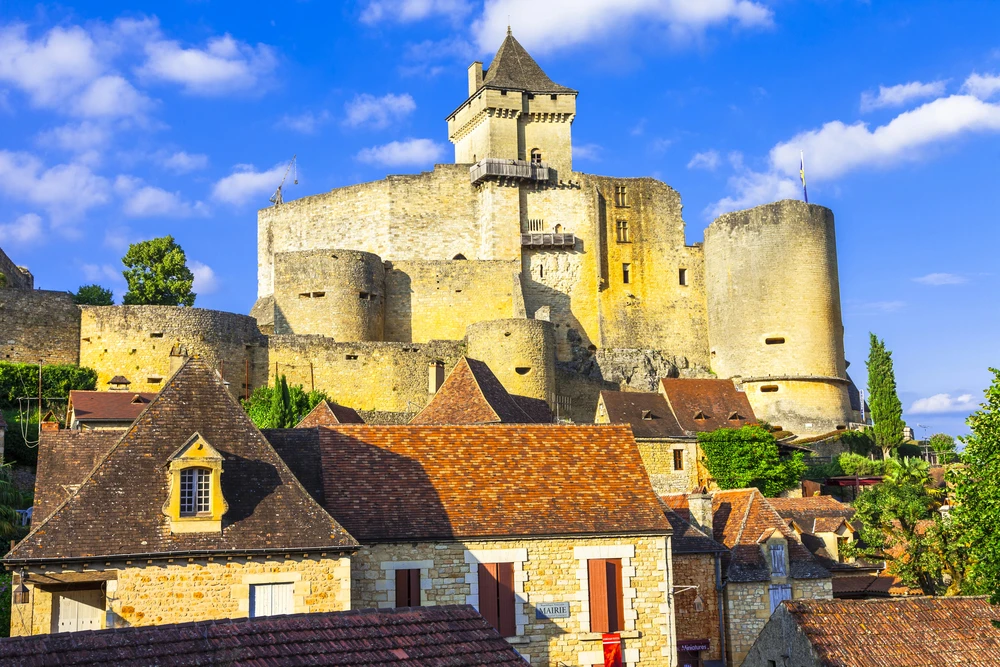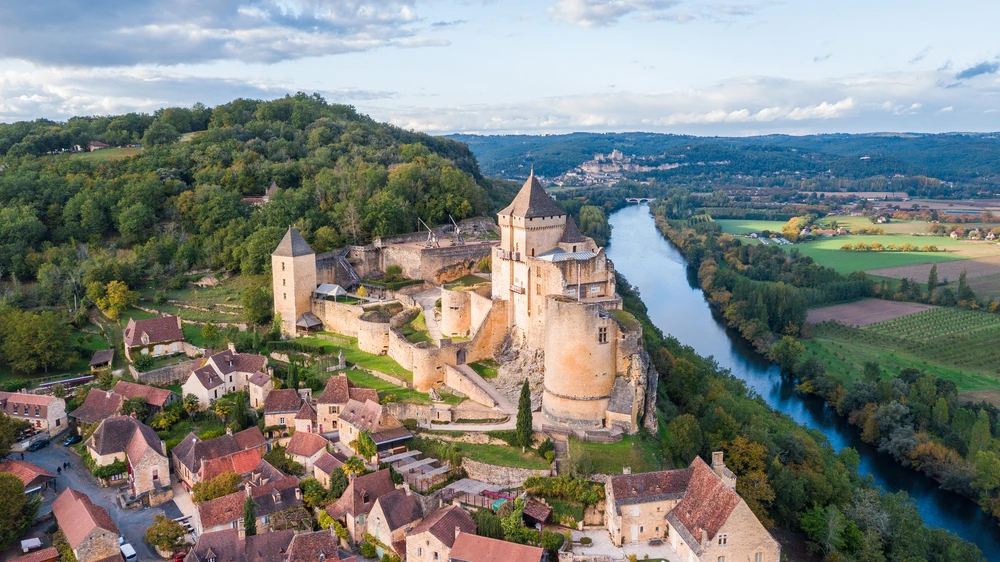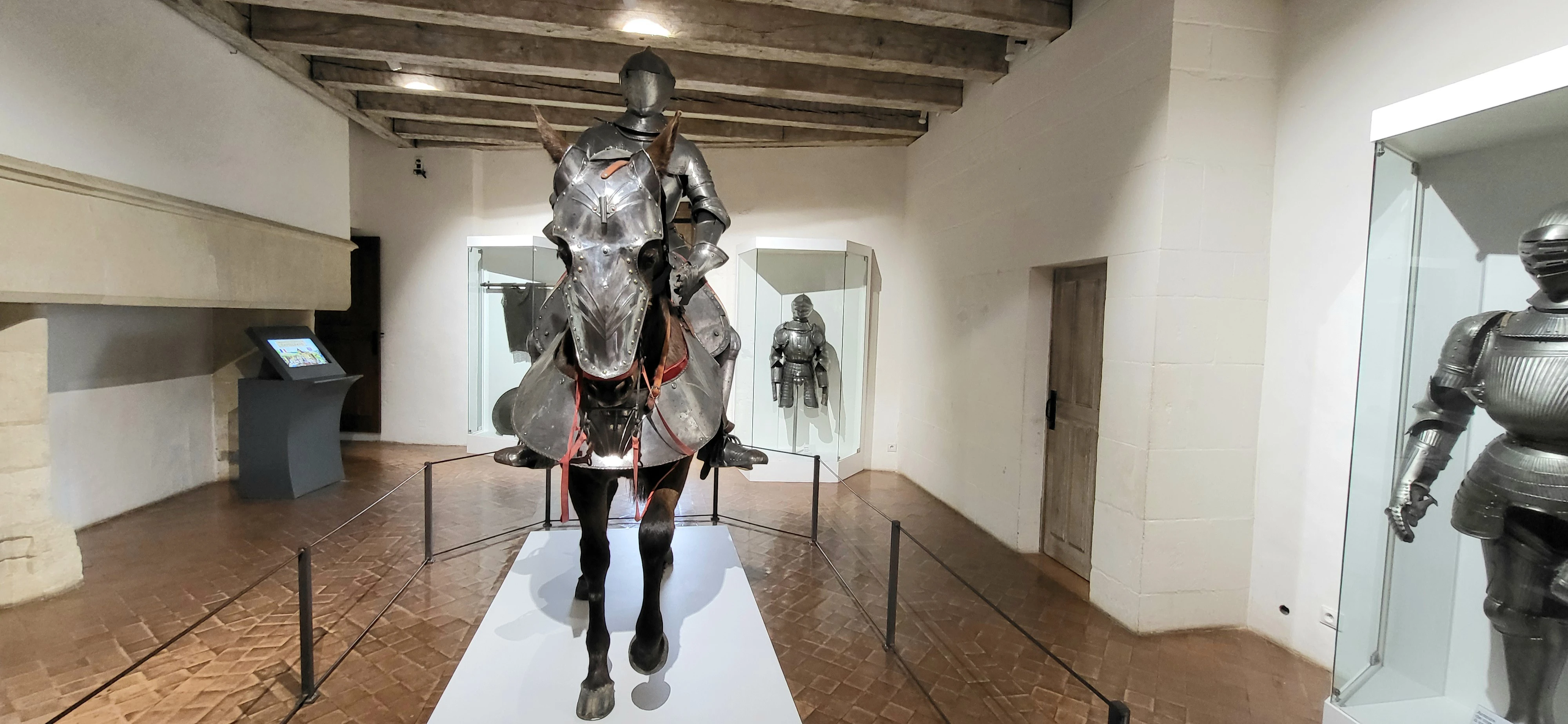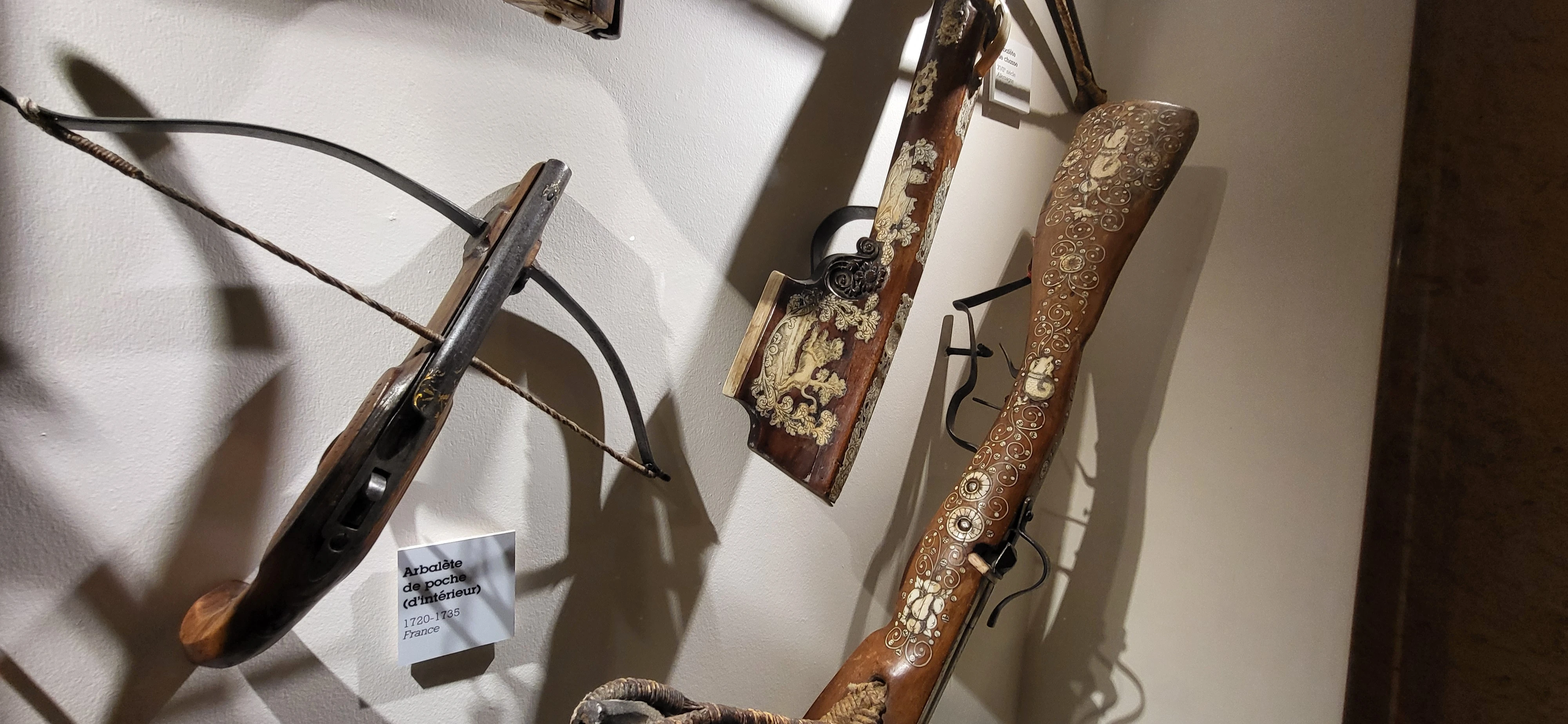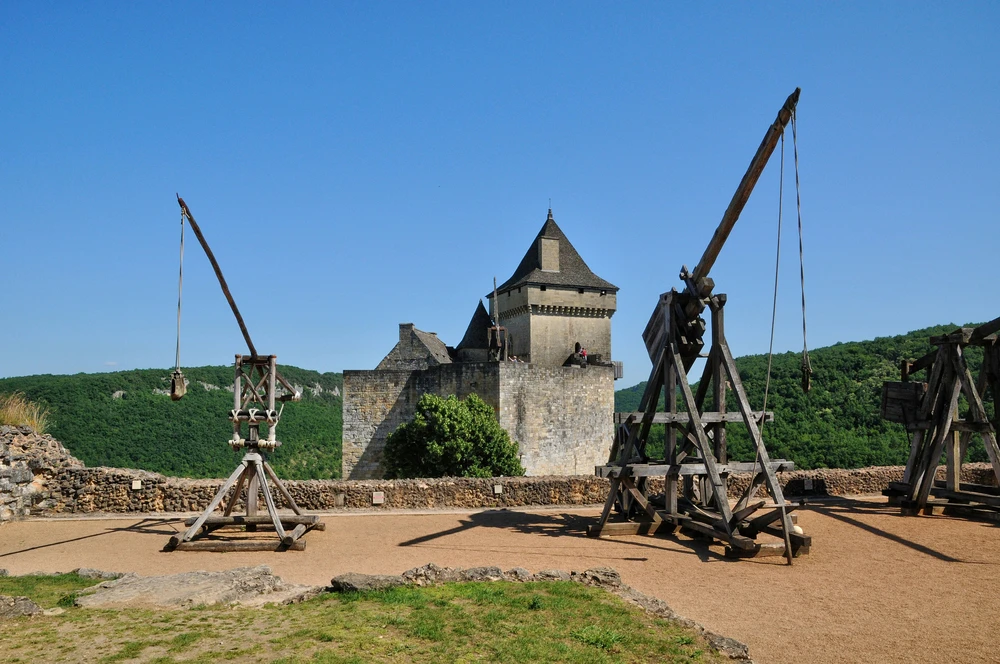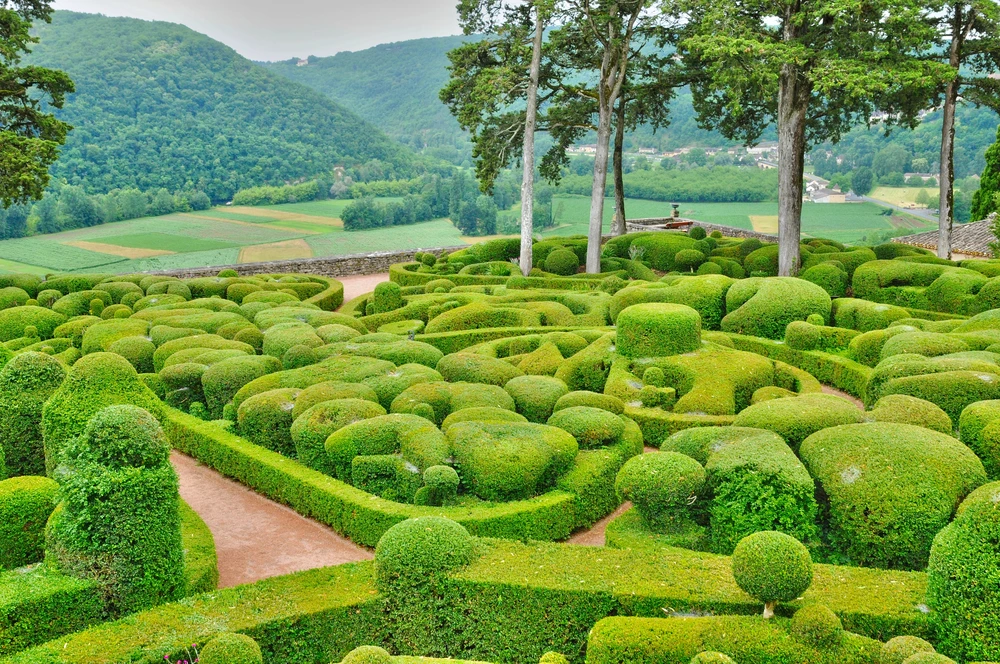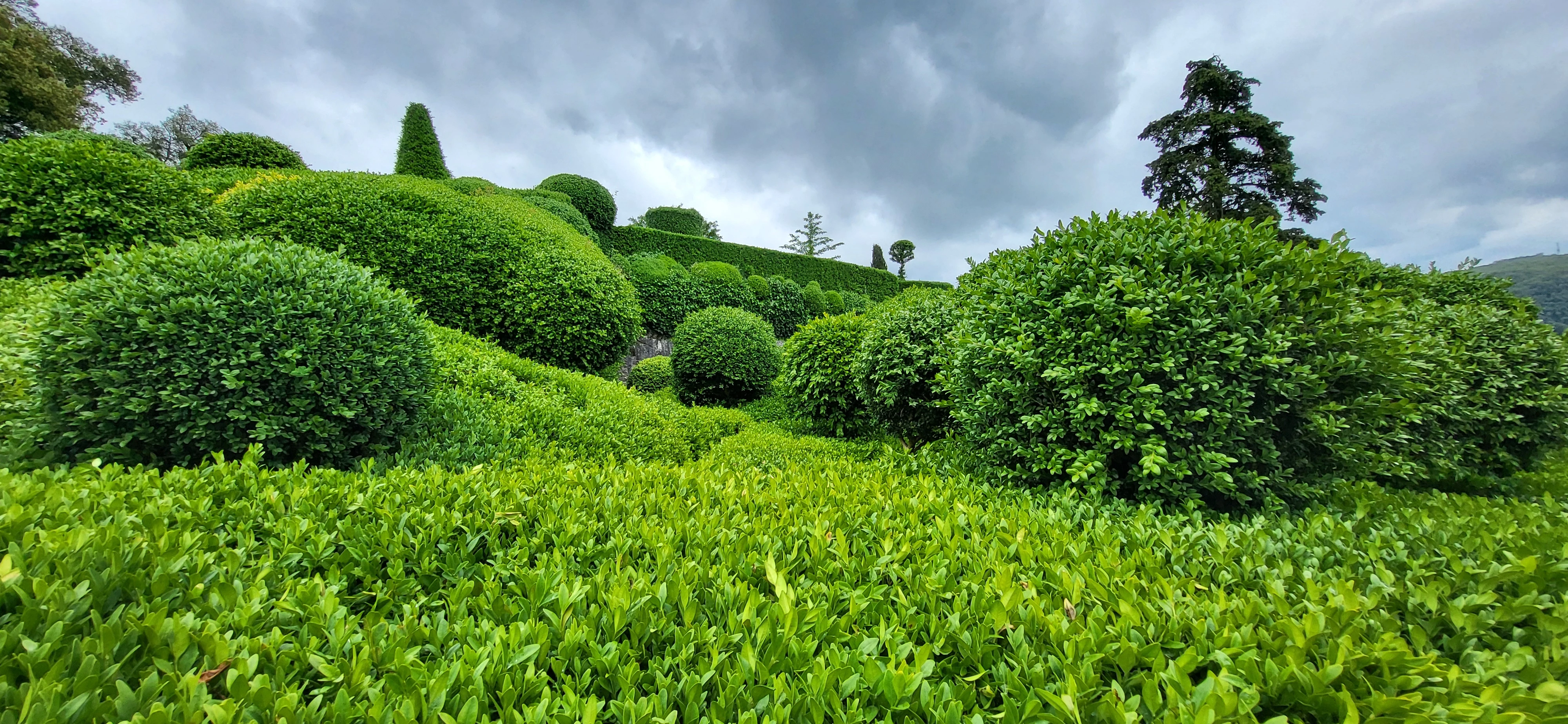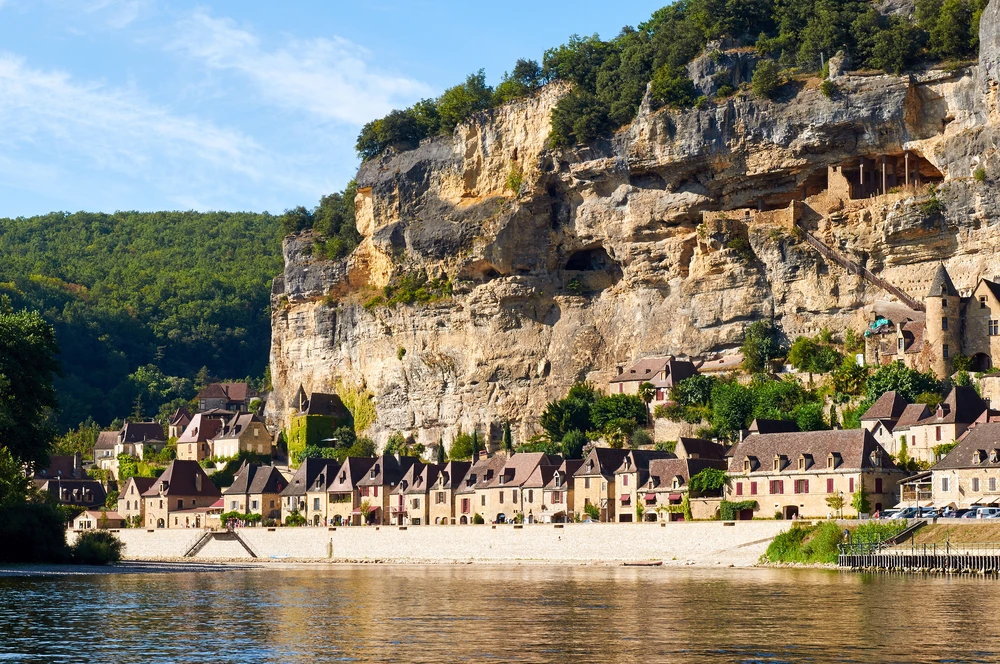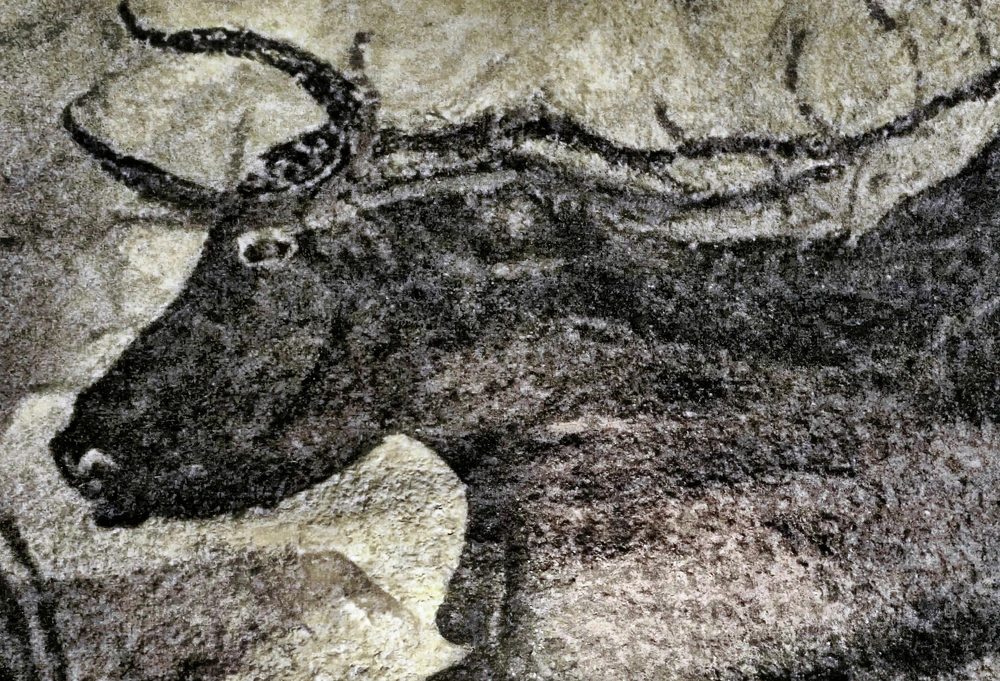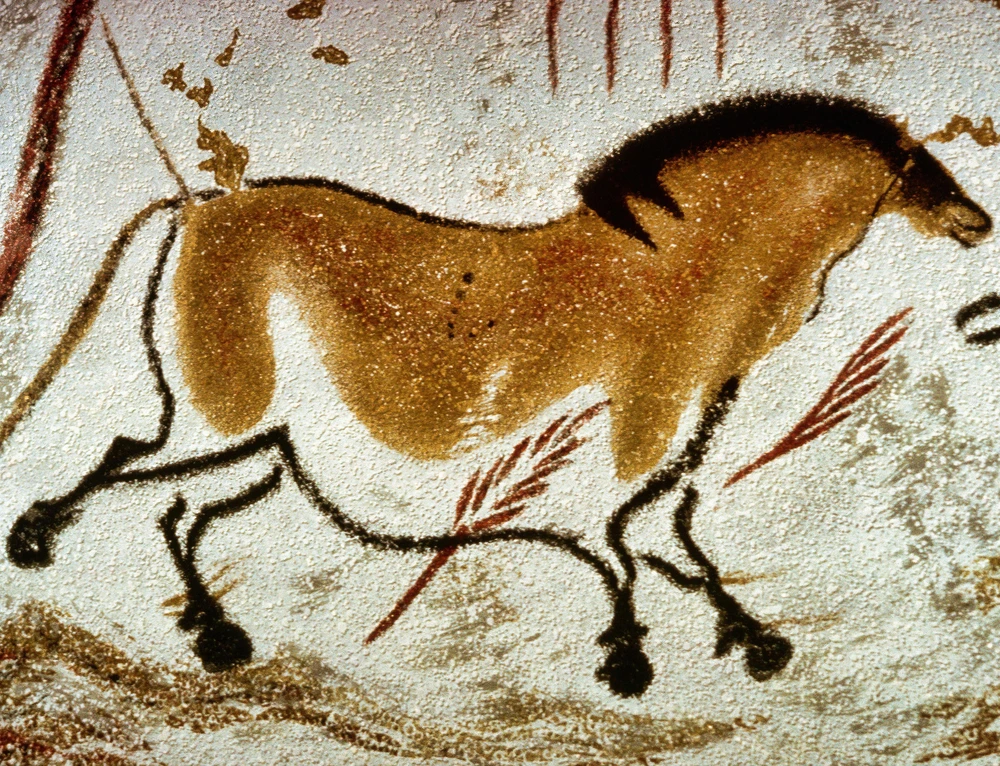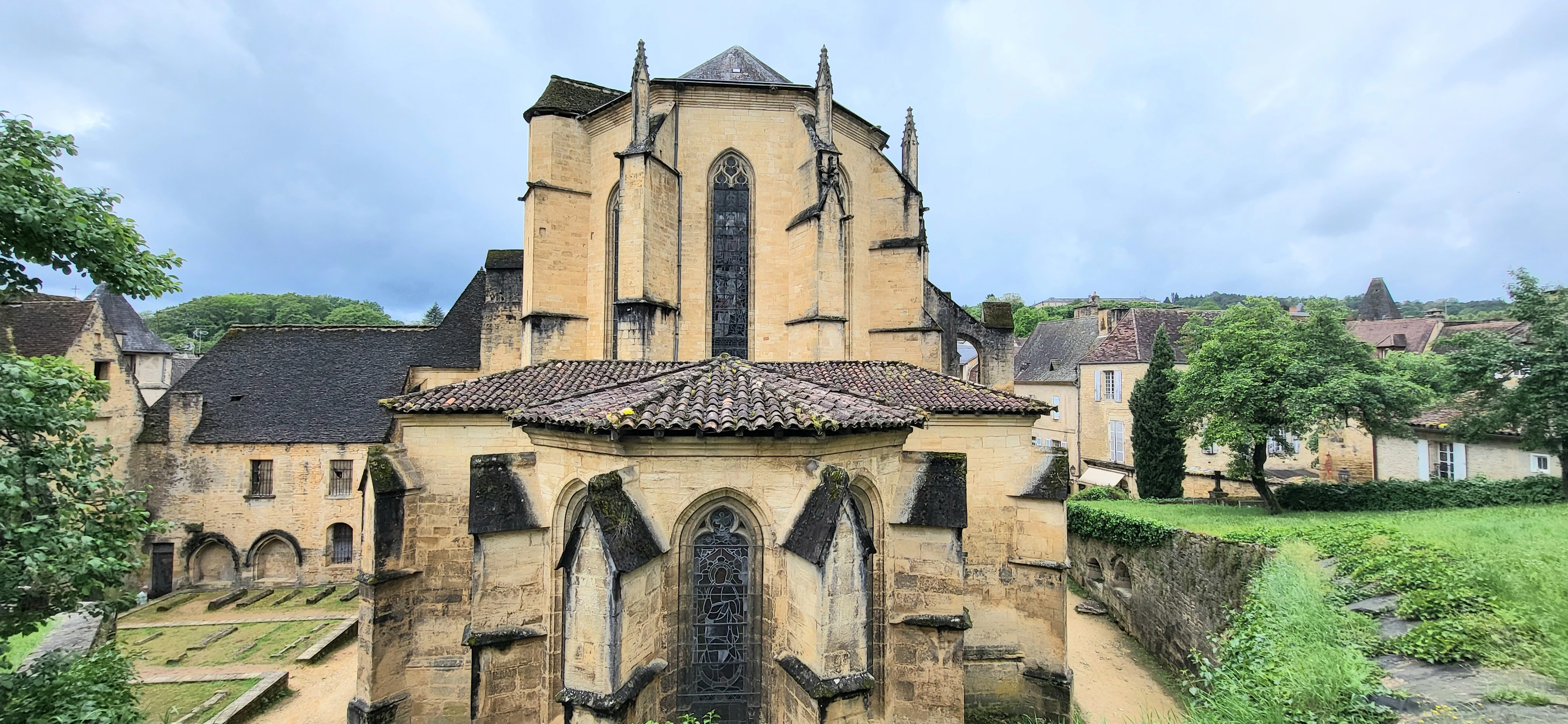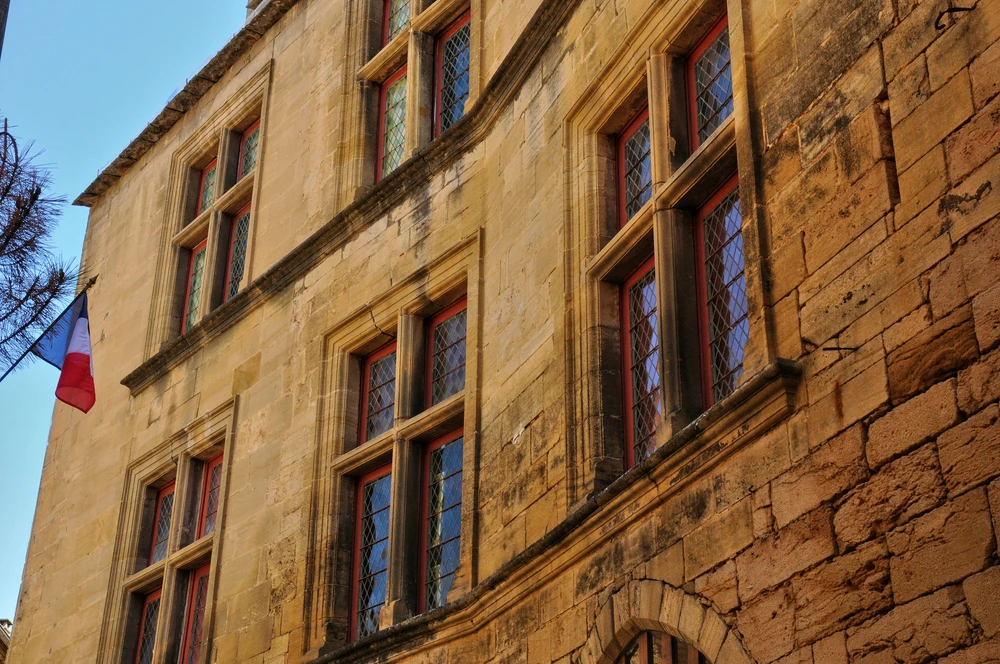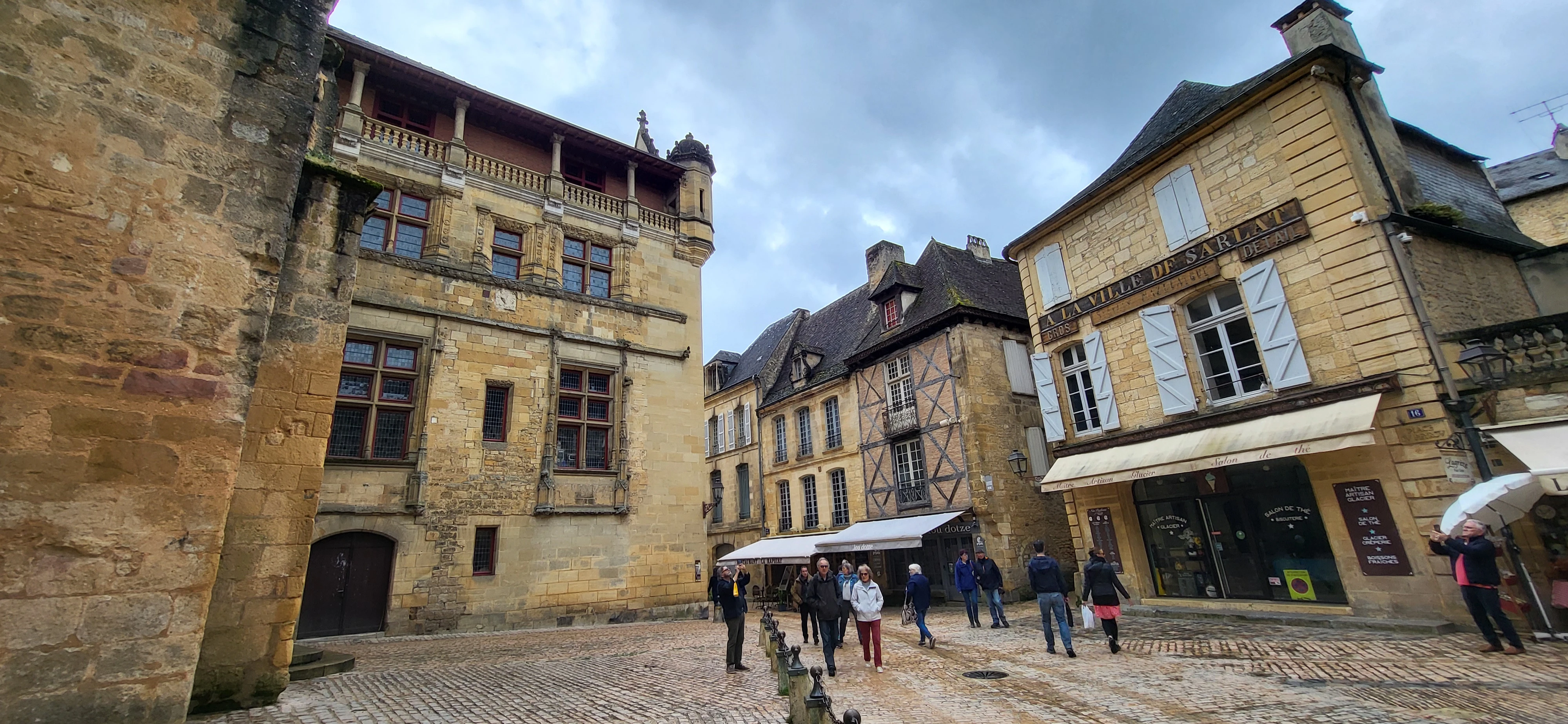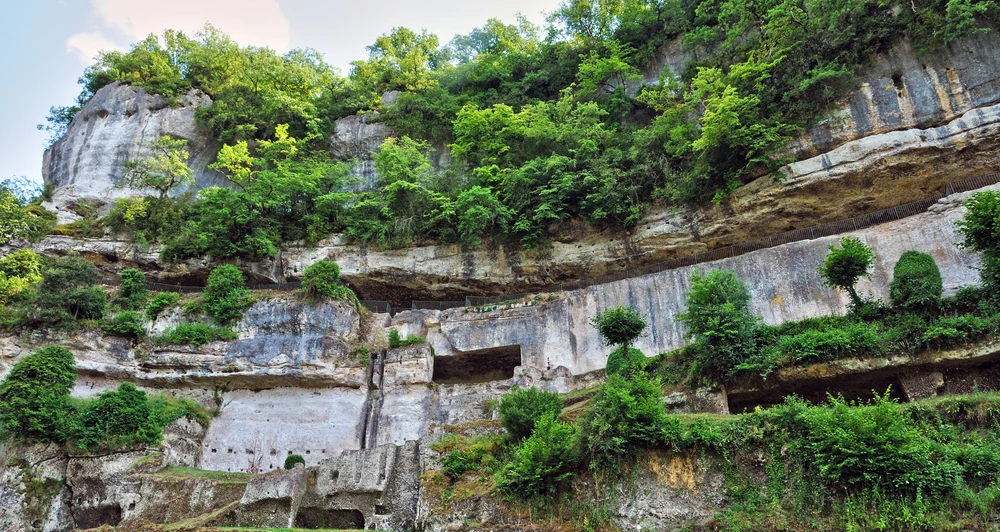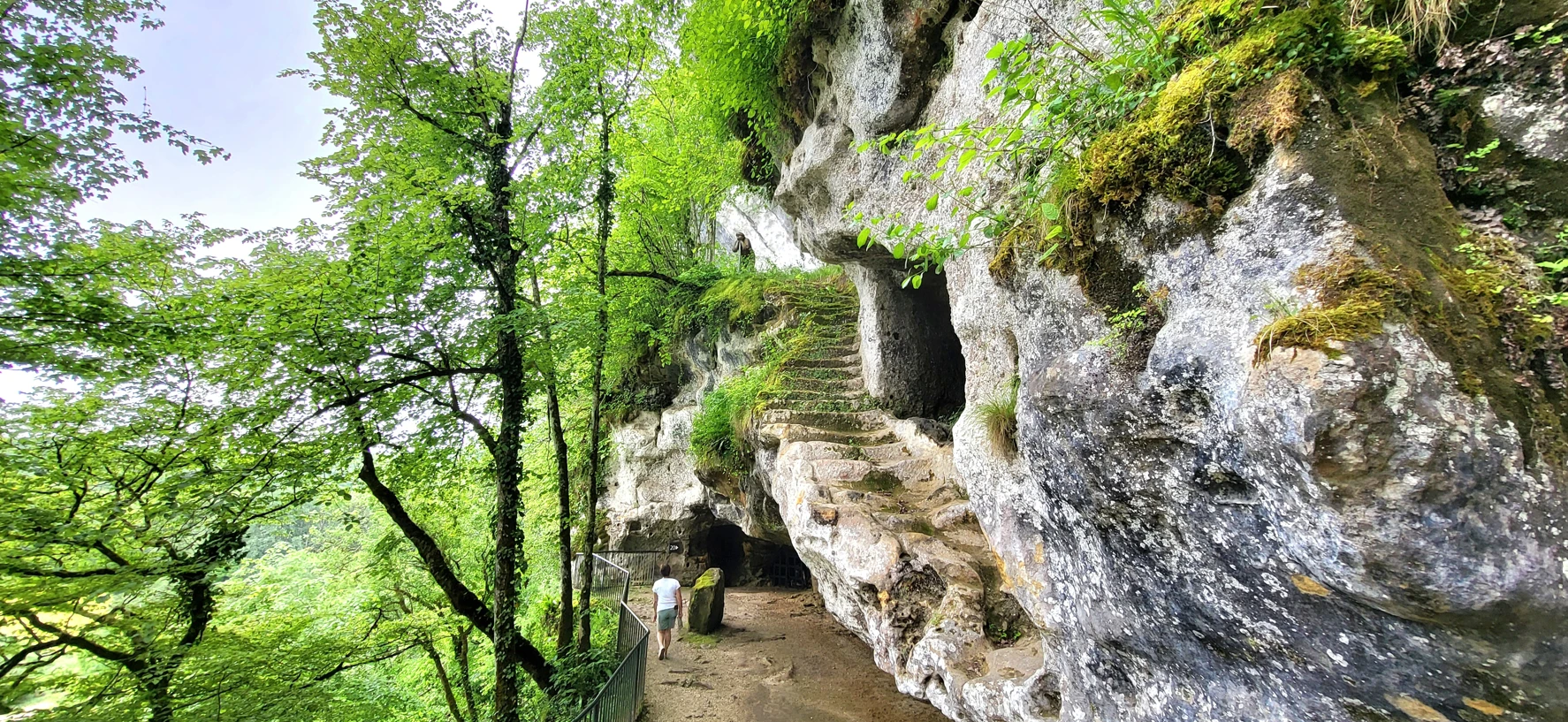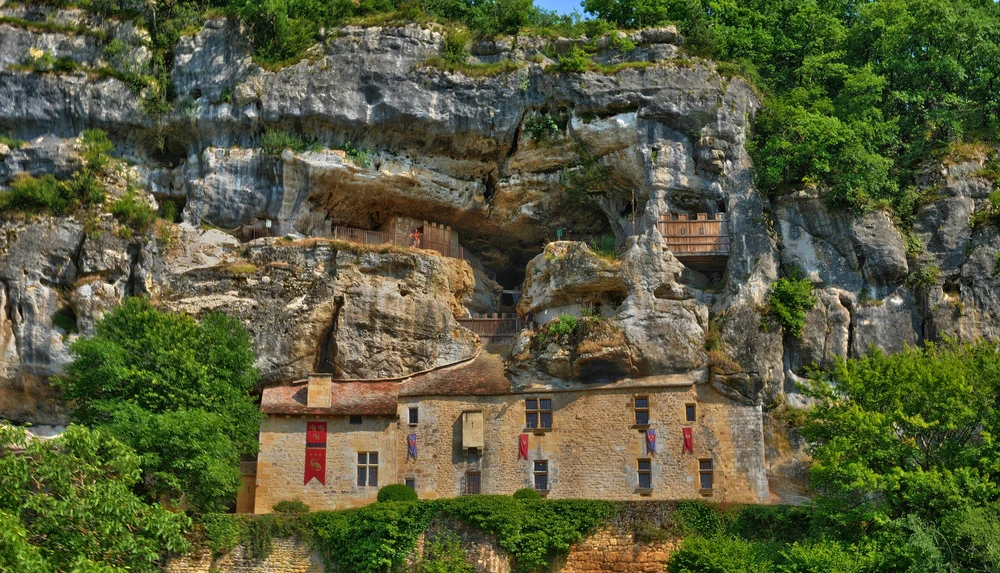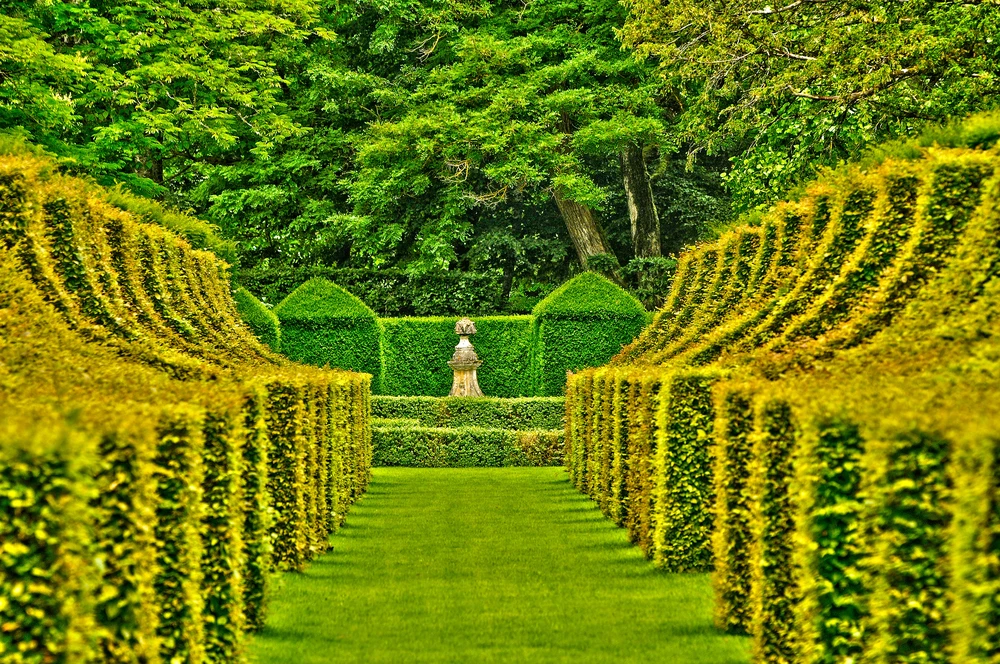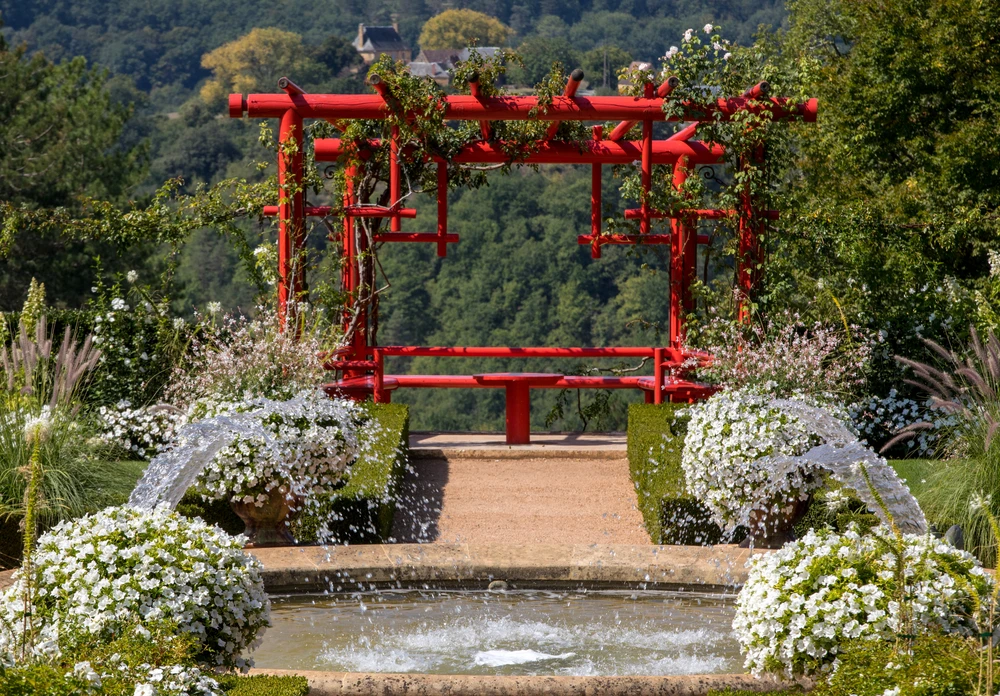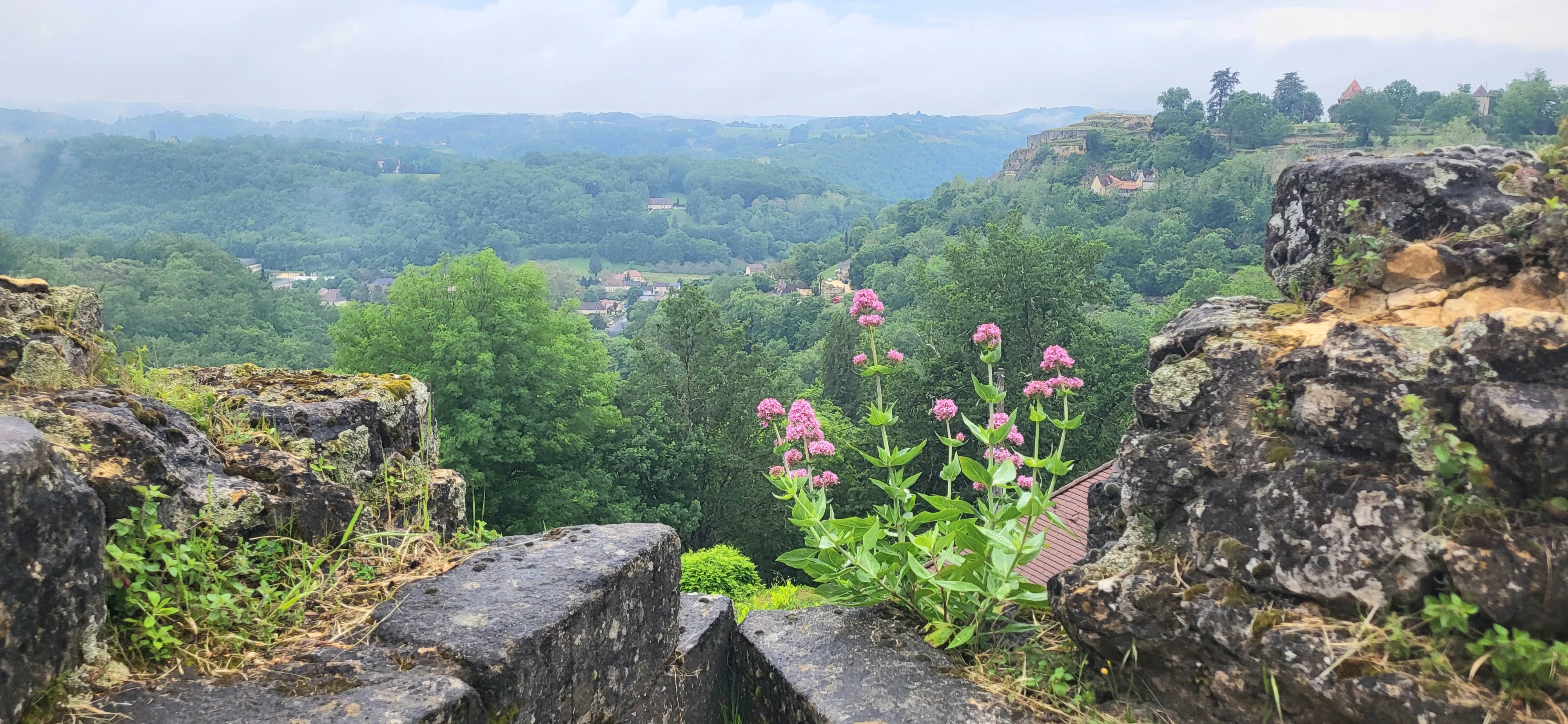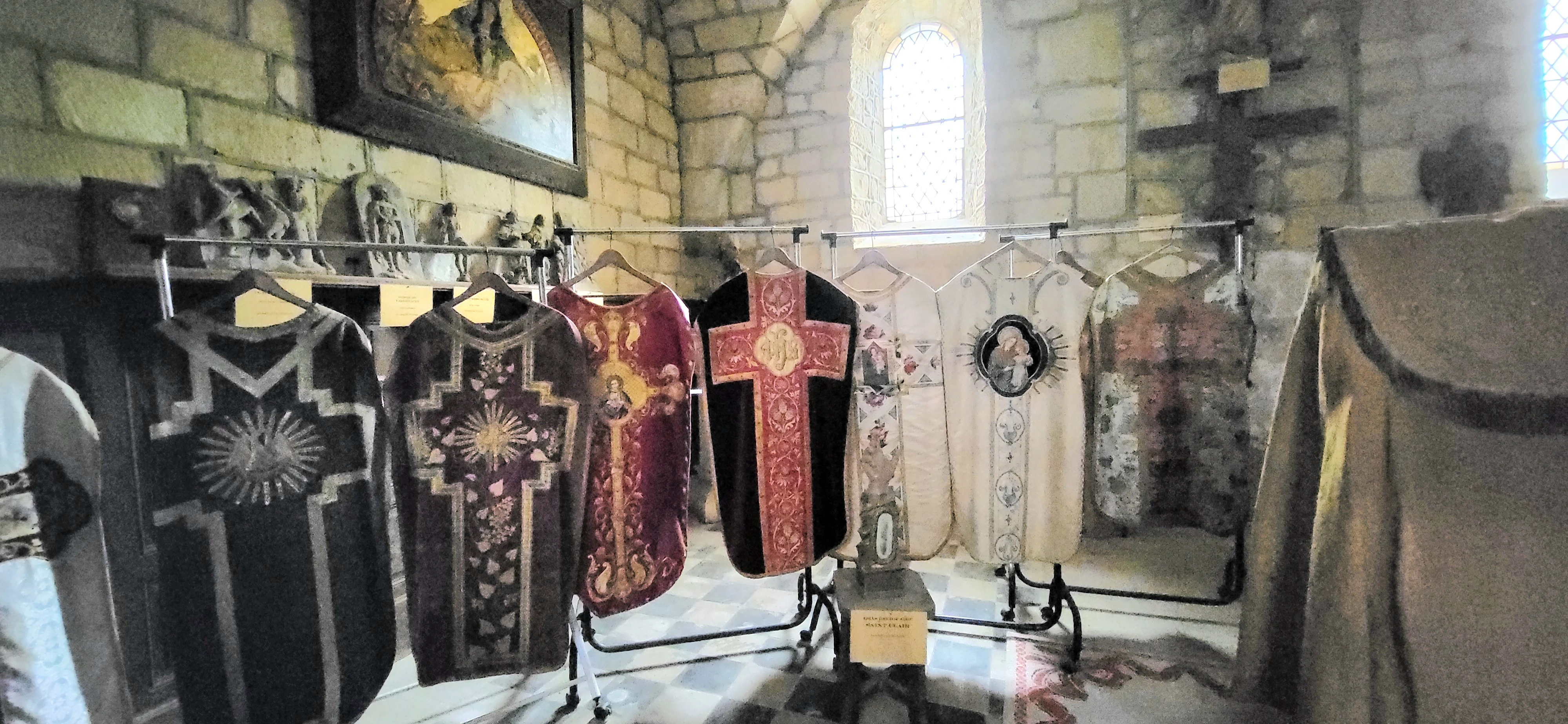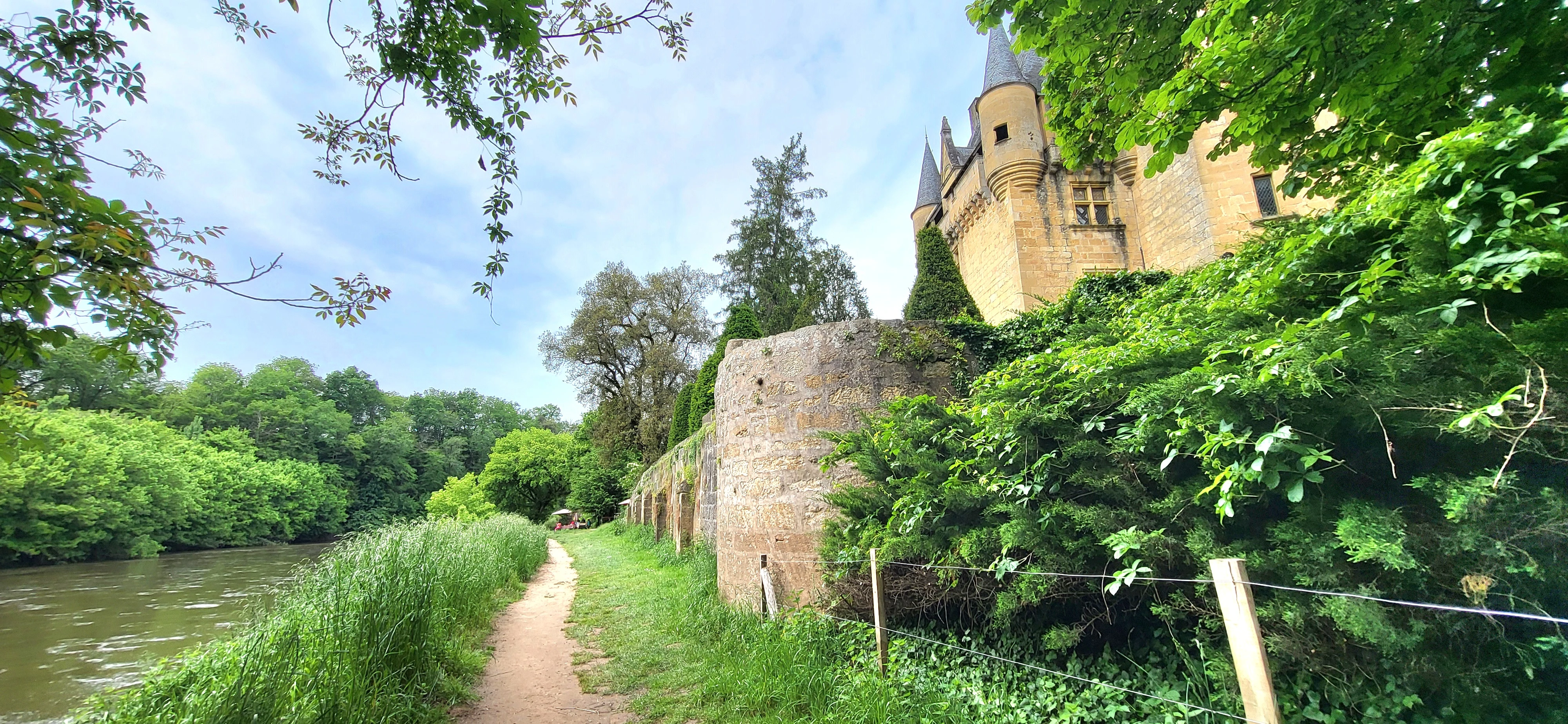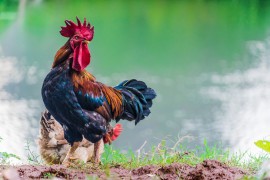I might as well be honest: there can be a few translation errors. Our translator tends to overdo the good stuff... And with so much good stuff around, we fear the worst. So bear with us!
I love the Périgord!
A very pretty view of Castelanaud castle. Photo chosen by Monsieur de France: packshot via dépositphotos.
A week in the Périgord Noir with a base at Saint Cybranet
It was in a rather nice gîte, lost in the forest, A Saint Cybranet, that I settled down here and it's a discovery of the main sites of the Périgord Noir that I propose to you here. I stayed there for a week, which will give you an idea of how to spend your own stay. Bear in mind that the weather wasn't great in May (but May is always a temperamental month). If you're not familiar with the region, note that the summer is very hot here and the forests are a real plus for keeping cool. I noticed that most of the gîtes and chambres d'hôtes have swimming pools, which is very welcome in fine weather. Don't hesitate to go and meet the locals, they're really friendly. Tourism is certainly important, but it is not abused and travellers are not treated like cash cows, just willing to pay for anything and everything, even if you do need to budget well for visiting the châteaux and parking (there are plenty of car parks, but most of them charge a fee). A greenway will delight cyclists of all abilities. It's more complicated for 'road' cyclists, who find it hard to fit in on the roads. The winding roads make for longer journeys than you might imagine (Sarlat is 16 km away, so it takes more than half an hour to cover by car). Walking is essential here, and there's a lot of climbing, but it's one of the pleasures of a stay in Périgord to walk, climb often, and discover magnificent viewpoints that make you feel very small in an ocean of greenery bristling with dungeons .
View of La Roche Gageac. Photo chosen by monsieur de France: Jérôme Prod'homme (c)
Oaks, river and history...
The river Dordogne is never far away, having carved through the rock over thousands of years, remembering the arrival of the first humans (the Lascaux caves are not far away), and seeing so many 'gabarres' (flat-bottomed boats), the ancestors of barges, pass by. Drawn by men, then by horses, from a path alongside the river, they travelled up or down the river to Bordeaux to bring their goods. The Vézère is the other river, and it too knows how to make a place for itself. The turbulent history of this land, which was on the border between France and England during the 100 Years' War and which was a Protestant stronghold during the Wars of Religion, has left a string of castles of varying size that are as much a part of the landscape as the centuries-old oak trees.
The Dordogne. Ideal for kayaking in summer. It's also a river with a long history, where barges used to sail up and down for trade. Photo chosen by monsieurdefrance.com: packshot via depositphotos
So many historic sites to see in the Périgord Noir
It's hard to imagine the number of châteaux, from the Middle Ages to the Renaissance, that dot the roads and paths of this beautiful Périgord. Each one is well worth a visit, and it's sometimes hard to choose. On average, you should expect to pay around €12 to enter and visit the most beautiful ones. It's well worth it, given the beauty of these sites and, above all, the upkeep they require to help them stand the test of time and pass them on to future generations. As far as possible, don't miss out on a visit. You can find out more here, but don't forget to visit the châteaux of Castelnaud (to immerse yourself in the Middle Ages), Les Millandes (where the memory of Josephine Baker lives on) and Marqueyssac (with its astonishing carved boxwood);
The view from the Château de Beynac, an important medieval site. Photo chosen by monsieurdefrance.com: Jérôme Prod'homme (c)
Why do we say Périgord Noir when it's so green?
It's striking how green this land is. High hills, with cliffs (which explains the incredible number of fortified castles, since it was on high ground that they liked to be built), vast woods and forests, numerous walnut trees, and small villages with light honey-coloured stone. You might wonder why they call it the Périgord Noir when you can see so much chlorophyll. But it's precisely because of the density of trees that the region owes its name. The forests are so dense, mainly made up of holm oaks, that it's dark and it's this that has given this part of the Périgord its nickname of Périgord Noir.
Périgord gastronomy: a real treat for the taste buds!
The Périgord truffle is very famous and the truffle markets are very popular during the season. Photo chosen by Monsieur de France: Reacticom via depositphotos
Here, foie gras is king, truffles are queen and walnuts are princess. This is one of the most famous areas for duck and goose, from which the famous confit and foie gras are made (the best foie gras in France is made here or in the Gers). It can be duck, but the best is when it comes from Périgord geese. It's also often available in jars. Jars in which you can also find ready-to-eat confit. This is also a land of truffles: the famous Périgord black truffle. This is the best truffle in France and is used to flavour many dishes. The simpler the dish, the better. Nothing beats a truffle omelette, for example. Périgord is also a region of walnut and chestnut trees. As a general rule, whether in a shop or a restaurant, the service is often very generous, with copious dishes, which is not to the tourists' displeasure.
Foie gras and confit of Périgord geese
As we said, foie gras is emblematic of Périgord cuisine. It's actually Périgord goose foie gras. There's nothing like foie gras pan-fried with its fat (the yolk). One of the culinary delights here is pommes de terre sarladaises, which are coarsely chopped potatoes sautéed in duck or goose fat (with a little parsley, it's sublime). Foie gras is no ordinary pâté. It is one of the noblest of dishes. That's why it's traditional to eat a piece of foie gras on bread (preferably farmhouse bread), without spreading it on anything.
Don't hesitate to try the local products. They really are local... Photo chosen by Monsieur de France: zhukovsky via depositphotos
Truffles: ideas and tips for the black diamond of gourmets
The truffle is a mushroom and is very "strong" in taste and smell. So, if you put the truffle you've bought in an airtight box with eggs, the eggs will take on the taste of the truffle, and you can make a truffle omelette without putting your truffle in it. Just peel it a little at the end to add flavour. So, when you've made the omelette, put your truffle in a box of rice or pasta, to do the same thing: add flavour. This way, you can make several dishes with just one truffle (the size of a large walnut for 4 people).
Perigord noir: 10 must-see sites :
Here are 10 sites that made an impression on me during the trip, in the order in which they were discovered. Please don't take this as an order of preference, as I generally prefer beautiful heritage sites. I've also included some practical information. Please note that the information given (prices, timetables, etc.) is indicative and not official. For prices and times, go to the official websites, I've included the links.
1 Beynac and Casenac: Beynac Castle
You may have a feeling of déjà vu when you arrive here, and that's normal. The Château de Beynac has been the setting for many films, including "Les visiteurs 2", "Fanfan la tulipe" and recently "Le dernier Duel". It has to be said that it really is a place of the Middle Ages as we imagine them. Some of the rooms give you the feeling of stepping into an episode of Games of Thrones. It's a castle of history and imagination...
Château de Beynac in Beynac-et-cazenac. Photo chosen by monsieurdefrance.com: jon_chica via depositphotos.
It's a small village dominated by a huge castle, where you walk up steep little streets (forget flat shoes, they often slip) and see many houses, some very small and very poetic, and more official places (like the presidial, which used to be the ecclesiastical court). Very authentic. The village of Beynac et Cazenac nestles under the cliff on which stands a fantastic medieval castle: the Château de Beynac, which takes you back to the Middle Ages. The experience is captivating. You wouldn't be surprised to see a knight in shining armour as you cross the bridge and enter.
The astonishing medieval kitchens of the Château de Beynac. Poultry was hung to prevent rats from eating it instead of humans. Photo chosen by Monsieur de France: Jérôme Prod'homme (c)
You'll understand better why these sites were impregnable when you enter the castle. As you walk around the monument (it goes up, down, up, down...), you'll discover the ramparts and the inventions used to repel attackers, the art of living inside (a bedroom, kitchens...), and other eras that have left their mark on the walls (the Renaissance with a beautiful staircase, the 17th century with the wood panelling room). Don't miss the castral chapel (even though it's closed to the public), which is now also Beynac's church, and above all the spur, which dominates the landscape from a great height and offers a breathtaking view .
One of the views from Château de Beynac: Photo chosen by Monsieur de France: Jérôme Prod'homme.
The castle was built in the 10th century to defend the Dordogne valley. Standing 152 metres above the riverbed, it is reputed to be impregnable. It was visited by Richard the Lionheart, King of England but also Duke of Aquitaine and therefore overlord of the local lords. In fact, King Richard entrusted the castle to one of his unsavoury feals, a certain Mercadier. Mercardier ended badly, murdered by a rival while on his way to pay his respects to Queen Eleanor, Richard's mother. The château then reverted to the family that had founded it, and remained with them until the mid-18th century. During the 100 Years' War, the château was a French fortress facing the English fortress of Castelnaud on the other side of the river. In 1962, a Marseille businessman named Lucien Grosso bought it from the family that had owned it since the 18th century, and set about renovating it with his future wife, Denise Grosso. The Grosso couple bequeathed the château to Albéric de Montgolfier in 1999, some say because his father was curator of the Carnavalet museum, so that he would take care of the château and continue their work. To this day, it is he who continues the history of Beynac and brings it brilliantly into the 21st century.
Where is it? And how much is it?
Château de Beynac in Beynac and Cazenac: 15 minutes from Sarlat (21 minutes' drive).
Opening times and prices on the official Château de Beynac website.
To sum up : Admission to Château de Beynac with the tour (with free audio guide available on your phone) costs 11.50 euros in 2024. It's free for children under 10. The château is open from 10am to 7pm, except on rare days of the year.
2 Castelnaud castle at Castelnaud la Chapelle
The Château de Castelnaud can be seen from a great distance. Photo chosen by monsieurdefrance.com: Maugli via depositphotos
This is a castle that can be seen from very, very far away- its 13th-century keep dominates the surrounding area from a height of over 150 metres - and it's well worth a visit for 2 reasons: a passion for history and the beauty of the landscape. You could add human ingenuity to the list, as it took the inhabitants of days gone by to devise ways of defending or attacking themselves, and still remain innovative. By visiting the outside of the castle (we highly recommend the guided tour), you can discover the military architecture of nearly 5 centuries and the machines used to attack or protect: the couillard, the trebuchet, the pierrière. We'll also discover how they worked, with some of them capable of firing cannonballs weighing over 100 kg from a distance of 200 metres. A castle with an eventful history (an English stronghold, it was taken and retaken 11 times during the 100 Years' War) that will transport you back to the Middle Ages, as everything is done to stimulate your imagination. A must-do with the kids, who will be delighted to go up and down and experience an era they often enjoy.
Aerial view of Castelnaud. Photo chosen by monsieurdefrance.com: jon_chica via depositphotos
The museum of weapons and the Middle Ages is amazing. It's in the castle, so it's included in the tour. It features a whole range of period weapons, and the collection is regularly expanded, including real armour (one from the 16th century) and an impressive collection of crossbows. The arrowheads are truly spine-chilling. It's a good way of remembering that our age isn't so bad, as it means we don't have to run into people armed with these kinds of objects, and it reinforces our admiration for the inventiveness of the people of the Middle Ages. This tour follows on from the exterior and takes you deep into the castle and its history. Castelnaud Castle is truly a must-see in Périgord (where the Cathars, Protestants and the famous Caumont de Castelnaud de la Force family left their mark on French history).
One of the suits of armour on display in the Château de Castelnaud weapons museum. Photo chosen by monsieurdefrance.com: Jérôme Prod'homme (c)
Finally, from the top of the fortress you can see a veritable ocean of forest, dotted with other châteaux (including Beynac, just opposite, and a rival during the 100 Years' War). The photos are truly magnificent. The castle dominates and allows you to see into the distance, or to observe, below, the village of Castelnaud itself, which is also well worth a visit. Here again, a labyrinth of narrow streets leading down to the river, small restaurants and food shops (baker, butcher, etc.) offering good produce in generous proportions.
Crossbows, some magnificently crafted. Photo chosen by monsieurdefrance.com: Jérôme Prod'homme (c)
Spotlight on an eventful history
Like many castles, Castelnaud dates back to the 10th century. It was built to command and watch over the Dordogne valley, and it was its newness that gave it its name (Castel naud: the new castle). Owned by the sad Sire Bernard de Casnac, vassal of the Count of Toulouse and a Cathar, it was besieged and taken by Simon de Monfort in 1214 during the crusade against the Cathars (a good religious pretext that allowed the lords of the north, first and foremost the King of France, to get their hands on the opulent south). Bernard de Casnac managed to retake his castle a few years later. He showed no mercy and had the entire garrison hanged. The Archbishop of Bordeaux took over the castle a few months later and had it destroyed. So it was a new castle that we know today. Construction of the keep dates back to the 13th century, but the castle was developed and improved over 150 years to take on the appearance we know today. Owned by the de Caumont family, it was an English stronghold during the Hundred Years' War, as the de Caumont family chose the side of the King of England (also Duke of Guyenne) in this war to determine who had a right to the throne of France. Faced with Castelnaud, Beynac remained loyal to the Valois and therefore to France. The castle was taken and retaken 11 times during the 132 years of the conflict, before being besieged for the last time on 7 October 1442 when the King of France sent his vassals and the town of Sarlat agreed to help, in particular by lending war machines. The English garrison held out for 3 weeks before opening the castle gates in exchange for 400 gold crowns and being able to leave unharmed. As a Protestant stronghold, like the de Caumont family who owned it, it was not besieged. It has to be said that the nobles kept a close eye on Geoffroy de Vivans, governor of the castle and rightly nicknamed "Geoffroy le Batailleur" (Geoffrey the Battler) for his skill at war and winning battles.
Castelnaud offers a reconstruction of medieval war machines. Photo chosen by monsieurdefrance.com: packshot via depositphoto.
The château belonged to the de Caumont family from the Middle Ages until the French Revolution , when their descendants fled Perigord for England and avoided the guillotine. Their château was sold as national property to some people who lived there for a while before trying to dynamite it to build a port just below, at Castelnaud, to help the barges that passed on the Dordogne to land. The Nompar de Caumont family provided the monarchy with several renowned military officers. It is also to them that we owe the neighbouring Château des Milandes, which is much more comfortable and was developed by François de Caumont, who had the Château des Milandes converted from 1488 into a comfortable residence in keeping with Renaissance tastes (mullioned windows, beautiful gardens, etc.). François de Caumont died during the Saint Bartholomew's Day. While the other Protestant lords fled, he wanted to look after his sick son in the company of his younger son. The father and the sick son were killed with halberds. Only the youngest survived, pretending to die and rolling over his father's body at the same time as his brother. The youngest, who lived to be 98, was Jacques Nompar de Caumont (1558-1652), one of Henri IV's most loyal companions (he was in the king's carriage at the time of Henri IV's assassination by Ravaillac). A great military strategist, he became Marshal of France.
Jacques Caumont de la Force (1558-1652) Illustration chosen by Monsieur de France: attributed to François Quesnel, Public domain, via Wikimedia Commons
In 1962, Castelanaud, which was badly damaged but still standing, was rediscovered and renovated by Philippe ROSSILLON (1931-1997) , who turned it into a tourist attraction by making reconstructions. He understood the interest of the public in a Périgord that was becoming the great tourist destination it is today. His descendants still own the château, as they do other sites.
Where is it? And how much is it?
Castelnaud la Chapelle: 15 minutes from Sarlat (21 minutes' drive).
Opening times and prices on the official Château de Castelnaud website.
To sum up : Admission to Castelnaud Castle costs 11.90 to 12.90 (2024) depending on the season, 6 to 6.50 for children aged 10 to 17, and free for children under 10. The château is often open, generally from 10am to 5pm in winter, and up to 8pm in the very high season in summer.
3 Marqueyssac castle and gardens
The grounds of Château de Marqueyssac. Photo chosen by Monsieur de France: Packshot via depositphotos
This astonishing hilltop château, high above the pretty village of Veyzac, dates back to the 15th century. It looks like a pretty 18th-century manor house. You can visit some of the pretty rooms, which are steeped in the art of living of the Age of Enlightenment. It's a great place to explore with children, who have their own play areas and are bound to be amazed to come across peacocks in the alleys.
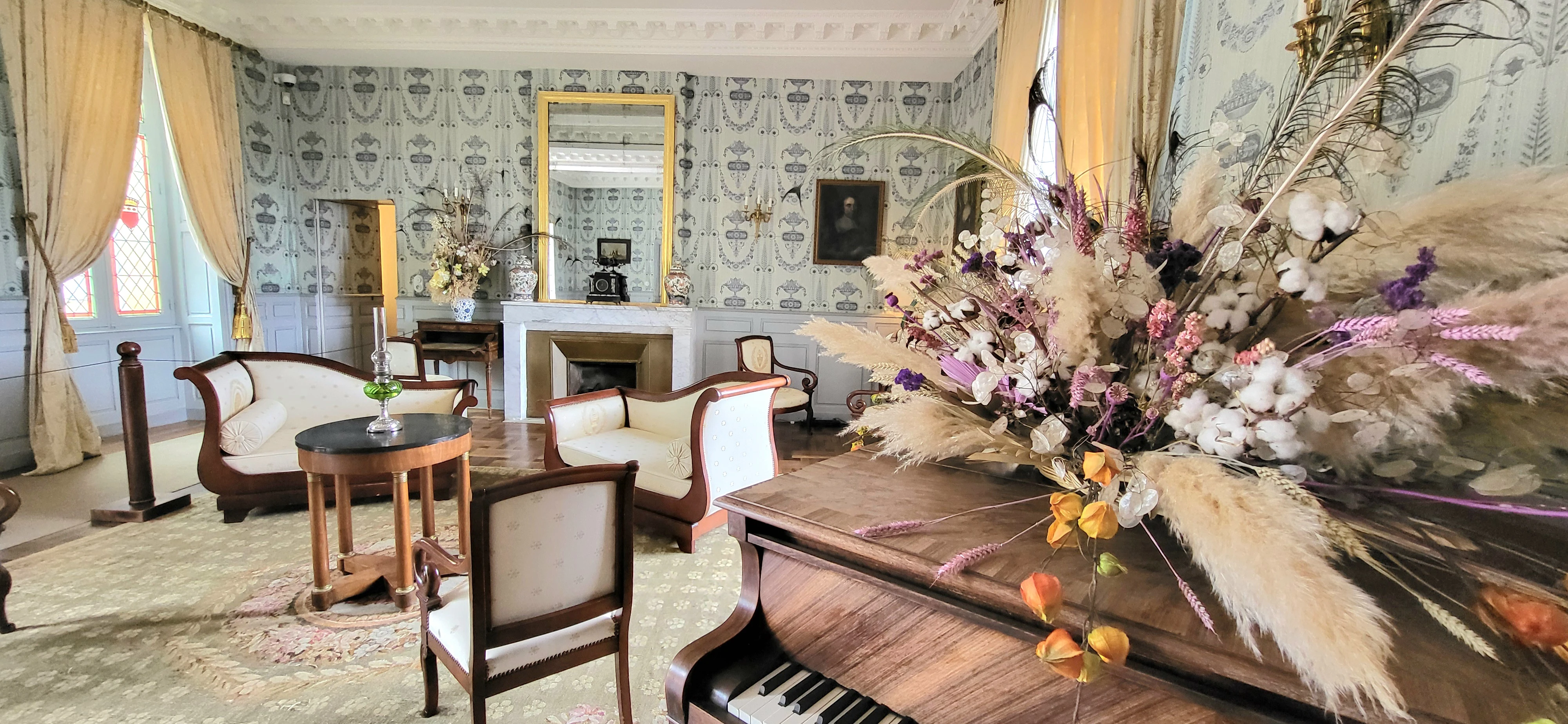 The interior of Château de Marqueyssac is a delight to visit. Here the living room. Photo chosen by monsieurdefrance.com: Jérôme Prod'homme (c)
The interior of Château de Marqueyssac is a delight to visit. Here the living room. Photo chosen by monsieurdefrance.com: Jérôme Prod'homme (c)
What makes this château so interesting is the incredible garden, a huge part of which is artistically made up of pruned boxwood (known as topiary). We're talking 150,000 feet of boxwood. In waves, with harmonious shapes, bordering on the labyrinthine, these boxwoods, most of which are pruned by hand, offer a superb spectacle for photographs. The park is sumptuous and vast, with 6 km of paths punctuated by surprises (the chapel on the hillside is both moving and graceful), and stretches out over a cornice offering a magnificent view. A truly wonderful discovery!
Marqueyssac château, detail of the pruned boxwood. Photo chosen by Monsieurdefrance.com: Jérôme Prod'homme (c)
Where is it? And how much is it?
Château de Marqueyssac is located in Vezac, 14 km (20 mins) from Sarlat la Canéda.
Opening times and prices on the official Château de Marqueyssac website
To sum up : Admission to the château and gardens costs 11.90 euros in 2024 (you can combine it with the château at Castelnaud and get a discount on both sites). 6.50 for 9-17 year-olds. Children under 9 are free. The château is open from 10am to at least 5pm (8pm in summer) except on rare days of the year.
4 La Roque Gageac
Panoramic view of La Roque Gageac. Photo chosen by monsieurdefrance.com: apgestoso via depositphotos
It's one of the most beautiful villages in France , and richly deserved for a village set on the banks of the River Dordogne, just below a cliff. On the programme: everything we love: narrow streets, private mansions (notably the Manoir de Tarde), the simple and moving church of Saint Donat. A small exotic garden with a bamboo grove. There are also numerous footpaths leading above the cliffs to discover a protected natural area. We're also right next to the Château de Marqueyssac. There's nothing more pleasant than dining here on the banks of the Dordogne.
La Roque Gageac. Photo chosen by monsieurdefrance.com: pizzatravel via depositphotos
Where is it? And how much is it?
La Roque Gageac is 14 km (20 mins) from Sarlat la Canéda. Discovering the village is free and a real pleasure!
5 Lascaux
Montignac-Lascaux is home to the Lascaux site, one of the most impressive prehistoric sites in the world . A series of rooms in an immense, deep cave takes us back thousands of years, to the time of the first humans, mammoths, aurochs and bears that populated this ancient region. A cave, then, used as a shelter and probably as a place of worship, in the middle of a forest full of game and not far from the Vézère river. It is 235 metres long and has a 30 metre drop. There are 7 main areas, including the "bull room", "the passage", "the nave" and "the well". Most of these rooms are covered in paintings that are no less than 10,000 years old. The drawings were created over several centuries and have evolved over time, probably becoming more symbolic. Thanks to them, we can discover the fauna of prehistoric times painted with stunning realism. We can also see very moving traces of our predecessors, such as hands that have been dipped in paint and affixed to the walls. Many prehistoric artefacts have also been found in the cave: assegais, arrowheads and everyday objects. The original site is now closed to the public because the number of visitors was eventually damaging it, but you will visit a facsimile, in other words the exact copy. And it's well worth the trip.
One of the many drawings in Lascaux. Photo chosen by monsieurdefrance.com: GP_Creative via depositphotos.
The discovery of a boy and a dog.
Until September 1940, in the middle of the Second World War, the village of Lascaux was a village like any other. A number of prehistoric sites had been discovered in the surrounding area in the 19th century, but there was no sign of what was to happen here. On 8 September 1940, Marcel, a young boy, was playing with his dog "Robôt", who went off in pursuit of a rabbit and followed it down a hole. Marcel, who had followed his dog, partly slipped under the hole created by the uprooting of a tree. Calling to his dog and throwing a few stones out of curiosity, he realised that there was a vast, deep cavity there and deduced that it was the tunnel that the village elders sometimes talked about, claiming that it linked the Château de Lascaux to the forest to enable the lords of the Middle Ages to escape. 4 days later, on 12 September 1940, Marcel returned to the site with his dog Robôt and his friends Jacques, Georges and Simon, to whom he had told about the "tunnel". They were determined to explore the site and set off with their little knives and some light. Enlarging the hole through which the dog had passed, they descend into the cavity and discover, in the dim light of their lamps, some extraordinary paintings. They had a hard time convincing the adults of their discovery. Their teacher, to whom they first told what they had seen, thought it was a joke because he was retiring. But a young adult makes sketches of the drawings and presents them to a local intellectual historian, Abbé Breuil, who understands what is happening: the discovery of the Lascaux cave is the greatest archaeological discovery in Europe in the 20th century .
One of the many drawings in Lascaux. Photo chosen by monsieurdefrance.com: GP_Creative via depositphotos.
Where is it? And how much is it?
The Lascaux caves are located avenue de Lascaux 24 290 MONTIGNAC. Sarlat is 27 kms away (35 mn).
To sum up : Admission for adults (over 13s are adults at Lascaux) is 22 euros (2024 rate). There are reduced rates for people with reduced mobility. Admission for 5- to 12-year-olds is 14.50 euros. It's free for children under 5. The site is open almost every day of the year, sometimes until 10pm (in summer). Please note that the last entrance is 2 hours before the end of opening hours.
6 Sarlat la Canéda
It's the capital of the Périgord Noir. A town with a rich history, it grew out of an abbey founded there in the early 9th century, and went on to become very important. Protected by popes and kings, it received Saint Bernard in 1147, where he is said to have performed the miracle of the loaves. He is said to have blessed some loaves of bread, saying that they would heal the sick who ate them. According to the chronicle, many people did this and were happy. Later, the city of Sarlat became important in the middle of the Middle Ages, at the expense of the Abbey, from which it freed itself. The town was protected by ramparts and became important enough to become the seat of a diocese in the 13th century. The diocese eventually replaced the abbey.
Sarlat: Saint Sacerdos cathedral: Photo chosen by monsieurdefrance.com: Jérôme Prod'homme (c)
Like the rest of the region, the town was ravaged by the plague during the great epidemic of 1347. During the Hundred Years' War, the town was divided between the English and the French, depending on weapons and treaties. All these upheavals were detrimental to trade, but under the leadership of the consuls, who shared power with the bishops, the town rose again and became even stronger. A Catholic town in a land that had become very Protestant (the Church made the diocese of Sarlat an archdiocese), it struggled to survive the Wars of Religion. In the 17th century, it supported the Prince of Condé during the Fronde, but was besieged. During the Revolution, the consuls were replaced by mayors (one of whom was overzealous in banning pipe smoking and hanging out washing along public promenades). With the decision to have a single bishopric for each department, the Revolution deprived Sarlat of its bishopric in favour of that of Périgueux for the Dordogne department, which weakened the town, even though the Empire made it a sub-prefecture a little later. The town came back to life in the 1960s with the arrival of tourism in Périgord, and was saved by the Malraux Law, which prevented the destruction of a town centre that deserved to be better maintained, but which had made the town's reputation, and rightly so.
A typical Sarlat facade. Photo chosen by monsieurdefrance.com: packshot via depositphotos
As you stroll through Sarlat, you'll want to climb the narrow streets, pass under the porches and discover the town houses. It's a town full of restaurants with terraces serving Périgord specialities such as confit, foie gras, walnuts... Simple, delicious dishes. Don't miss the Cathedral of Saint Sacerdos, with its Gothic architecture and beautiful stonework. The interior is simple and well-balanced, with beautiful chapels. The well-decorated wooden stalls are well worth a look. Next door, the Lantern of the Dead marks the passage of Saint Bernard (the dead were also watched over here, hence its name). The Place de la Liberté is also very pleasant.
A place in Sarlat: Photo chosen by Monsieurdefrance.com: Jérôme Prod'homme (c)
If you like reading, you absolutely must discover "Fortune de France" by Robert Merle. The story follows the life of Pierre de Siorac, born in Mespech near Sarlat, and the first volume takes you back to Sarlat in the 16th century. A lively, energetic and exciting historical novel that continues to delight fans of history and adventure books, as well as conveying a magnificent message of tolerance .
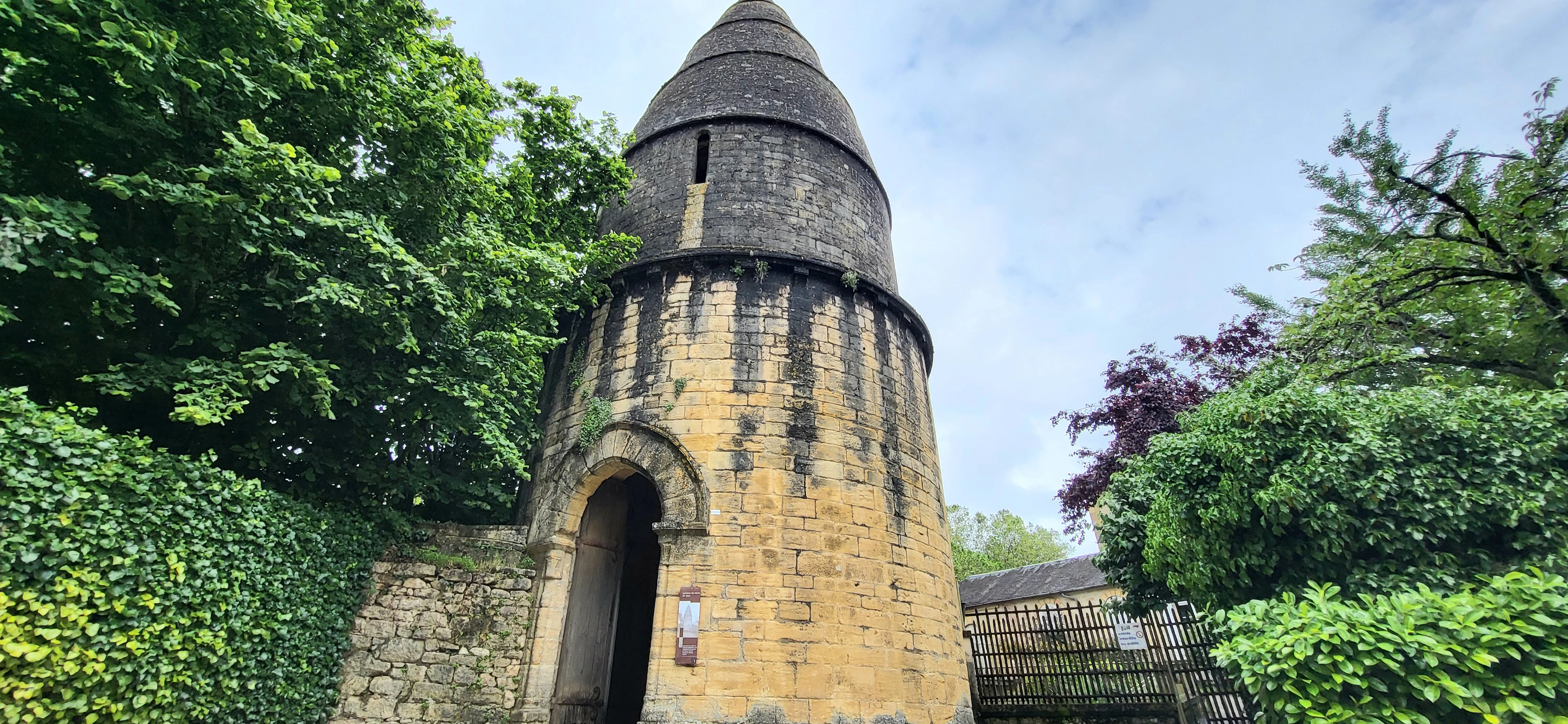 The astonishing lantern of the dead near Sarlat cathedral. Photo chosen by monsieurdefrance.com: Jérôme Prod'homme (c)
The astonishing lantern of the dead near Sarlat cathedral. Photo chosen by monsieurdefrance.com: Jérôme Prod'homme (c)
Where is it?
Sarlat is 1 hour from Périgueux, 1 hour 50 minutes from Limoges, 2 hours 30 minutes from Bordeaux or Toulouse, and 6 hours from Paris by car. By train, it takes at least 5 hours to get to Paris. By plane, you can land at Brive or Bergerac.
The official Sarlat tourism website
7 Les milandes
Wanted by the Nompar de Caumont family, who ruled over Castelnaud which they considered uncomfortable, the château des milandes was considerably altered on the orders of François de Caumont at the end of the 15th century to bring it up to date with the Renaissance in full swing. The walls, towers and gargoyles from the Middle Ages were preserved, but the rooms were decorated and the windows were opened to let in more light. Abandoned by the family during the French Revolution, it was struck by fire and almost completely destroyed in the early 20th century. A millionaire named Jules Vincherot restored it at his own expense in 1908.
The Château des Milandes and its flowerbeds in bloom in spring. Photo chosen by monsieurdefrance.Com: STYLEPICS via depositphotos
The Château des Milandes was bought in 1947 by Joséphine Baker , who had been renting it regularly for 10 years. It was here that she spent many happy years and welcomed her "rainbow tribe", children from all over the world whom she adopted and brought up here (12 children of 9 different nationalities). Famous for her great talents in the music hall, this American citizen who became a French citizen was a member of the Resistance. She was recently admitted to the Panthéon. The château preserves the precious memory of this great artist by displaying some of the outfits she wore. She was forced to leave it, ruined by debt, in 1969. It is said that she spent her last night on the steps of the château, the door having been locked behind her. The castle is beautiful, all in white stone, the gardens are full of flowers and a show of birds of prey will astonish even the most jaded.
Where is it? And how much is it?
Château des Milandes is located in Castelnaud la Chapelle. It is 15 minutes from Sarlat (21 minutes by road).
The official Château des Milandes website
To sum up : Admission for adults (aged 17 and over) is 13.50 euros, and 9 euros for children aged 5 to 16. The château is open most of the year, mainly from 10am to 6pm, but is open until 8pm during the high season (July and August). Note that admission entitles you to see the birds of prey. Admission is possible up to 30 minutes before closing time.
8 La Roque Saint Christophe
La Roque Saint Christophe seen from below. Photo chosen by Monsieurdefrance.com: packshot via depositphotos.
This is a site that will fascinate lovers of history and unusual places. It is one of the oldest and largest air raid shelters in the whole of Europe. It is in fact a fortified hilltop village that was dug into the cliff to escape the Norman invasions at first, then conflicts and epidemics. For several centuries, up to 1,000 inhabitants lived on the cliffside in a village carved into the rock, which protected them because it was impossible to besiege from above or below. A single gate allowed entry. Ingenious devices enabled food and even livestock to be brought up when the surrounding area came under attack (a surveillance system meant that any army passing through the area could be warned hours before the assault). The houses were sometimes made of stone, sometimes of cob (a clever, light, insulating type of mud that was stuck on racks between wooden posts).
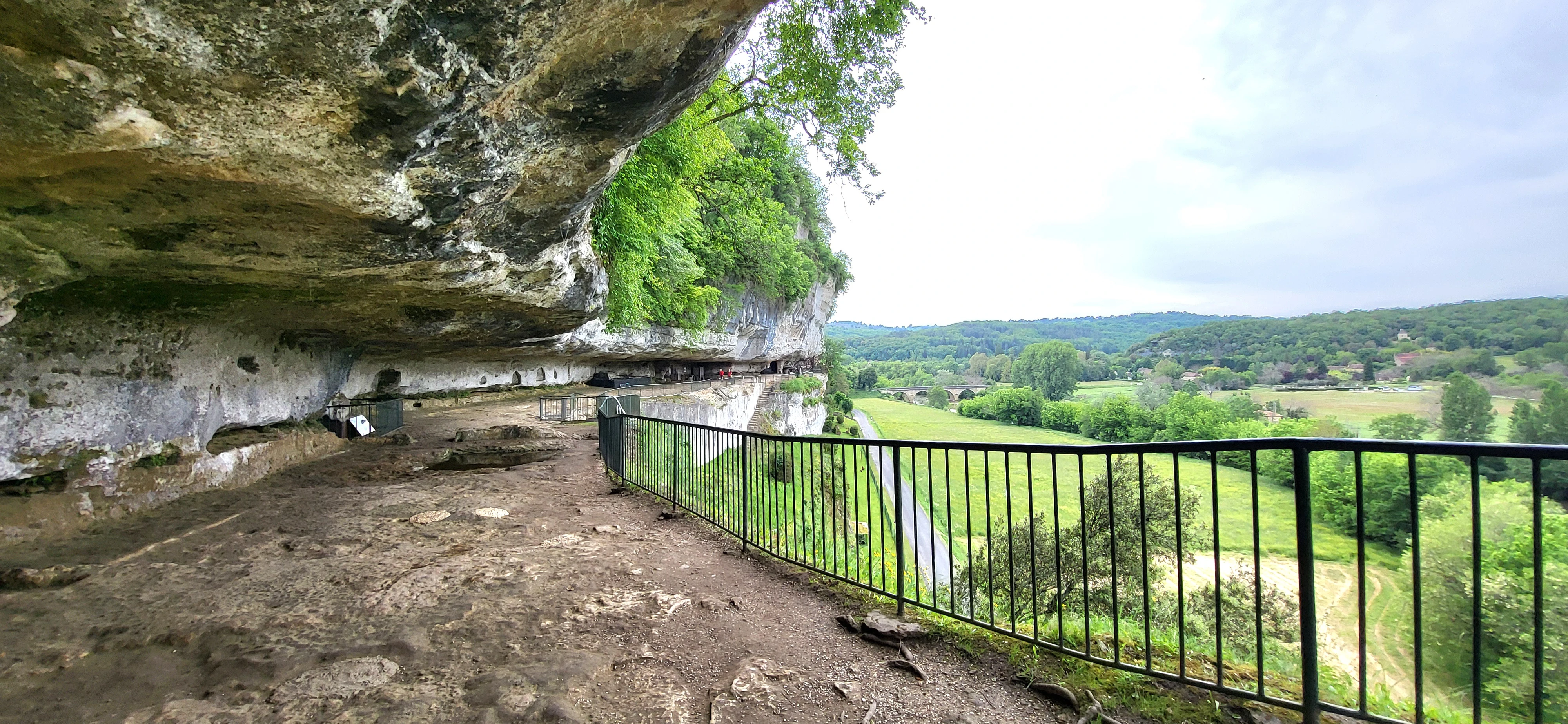 La Roque Saint Christophe and one of the plateaus on which the village was built. Photo chosen by monsieurdefrance.com: Jérôme Prod'homme (c)
La Roque Saint Christophe and one of the plateaus on which the village was built. Photo chosen by monsieurdefrance.com: Jérôme Prod'homme (c)
Everything was destroyed in 1588 to prevent Protestants from taking refuge there and forgotten. Rediscovered in 1938, the site was cleared of vegetation and developed by a family that has been working here for nearly 5 generations. As you walk around the site, you can imagine where the houses, cowshed, butcher's shop and even the church once stood. There are panels explaining the site, as well as a film. It's quite fascinating, the view is splendid and there's a sense of discovery and adventure that will delight the little ones.
The Roque Saint Christophe staircase. Photo chosen by monsieurdefrance.com: Jérôme Prod'homme (c)
Further on, you can discover an ancient prehistoric site (not far from Lascaux, many of our prehistoric predecessors lived here in caves, not far from the river and in a forest full of game). You can also visit a Renaissance château. So it's almost a complete journey from around 50,000 BC to the end of the Renaissance that you can take here. Our recommendations.
Close to La Roque Saint Christophe, the Reynac fortified house is a troglodyte site where the Middle Ages are brought back to life.Combined tickets for the 2 sites are available. Photo chosen by Monsieur de France: packshot via depositphotos
Where is it? And how much is it?
La Roque Saint Christophe : 2433 route de la préhistoire in Peyzac le Moustier. 30 km (35 mins) from Sarlat la Canéda.
Opening times and prices on the official La Roque Saint Christophe website .
To sum up : You can visit all 3 sites at the same time, or just one. A visit to the troglodytic city of La Roque Saint Christophe costs between €10.90 and €11.90 for adults (2024 prices), and between €4.70 and €8 for under-17s, depending on age and the season. There are also night-time shows.
9 Eyrignac castle and gardens at Salignac-Eyvigues
One of the magnificent paths of the Eyrignac gardens / photo chosen by monsieurdefrance: packshot via depositphotos.
It's a delightful manor house surrounded by a vast, beautiful garden that alternates between pathways, boxwood clippings, surprises (a Chinese pagoda, for example) and views of the superb Périgord landscape. The park covers 6 hectares. You can pass through a magnificent avenue of taupières and continue towards the 'white' garden, passing in front of the manor house. With its French-style gardens, English-style paths and vegetable garden, there is so much to discover. A visit that encourages you to stroll, reflect, relax and think. Impossible not to visit if you love the art of gardening.
The white garden and its fountains. Photo chosen by monsieurdefrance.com: wjarek via depositphotos.
Where is it? And how much is it?
Château de Eyrignac in Salignac-Eyviques: 14 km (20 mins) from Sarlat la Canéda.
Opening times and prices on the official Château de Beynac website.
To sum up : a self-guided tour of the park and gardens costs 13.90 euros in 2024 (12.90 euros if you book online). To be honest, it's a bit expensive, but the ticket is valid for the whole day (you can leave and come back again). It's easy to talk to the gardeners. You can also take a one-day course (the apprentice gardener package), which costs 250 euros.
10 Typical villages :
Domme
The view from the ramparts is magnificent. Photo chosen by monsieurdefrance.com: Jérôme Prod'homme (c)
Once you've climbed a little, you'll love entering the little town and losing yourself in the narrow streets of Domme, discovering the church (and an astonishing collection of religious copes) and the remains of the ramparts. The houses are often decorated with flowers by the locals, who clearly enjoy embellishing their homes as well as pleasing visitors. Domme is a royal fortified town. It was also an opulent town, with the privilege of minting coins and holding several fairs. It didn't leave a fond memory of the Knights Templar , 70 of whom were imprisoned here, and whose graffiti reminds us of their passage in an almost esoteric language. Having fallen into disuse in the 17th century, it has remained largely unchanged since then. The cave just below the Tourist Office is well worth a visit. For the anecdote, behind the tourist postcard and the 900 inhabitants, Dommes is also a major strategic site for France since on its territory is a listening site of the ECHELON network.
The astonishing collection of copes in Domme church is well worth a visit. Photo chosen by Monsieurdefrance.com: Jérôme Prod'homme.
Where is it?
Domme is 12.5 km from Sarlat (20 minutes).
Saint Léon sur Vézère.
The banks of the Vézère at Saint Léon de Vézère . Photo chosen by Monsieurdefrance.com: Jérôme Prod'homme (c)
Saint Léon sur Vézère is a very pretty village, whose 11th-century church is well worth a visit. It is a very moving sight, hemmed in by the Vezère river, which recalls seeing the garbardiers pass through and stop in the little port a little way off. There is one of the rare liberty trees planted in 1989 to celebrate the French Revolution. You can lose yourself in the narrow streets and discover the bridge, a little café for a drink by the water and the two châteaux : the Renaissance Château de Clérans, just above the river, and the Château de Chabans, further on, whose name inspired Jacques Chaban-Delmas to find a nom de guerre when he joined the Resistance. He became a major politician in the 20th century and the most famous mayor of Bordeaux.
,
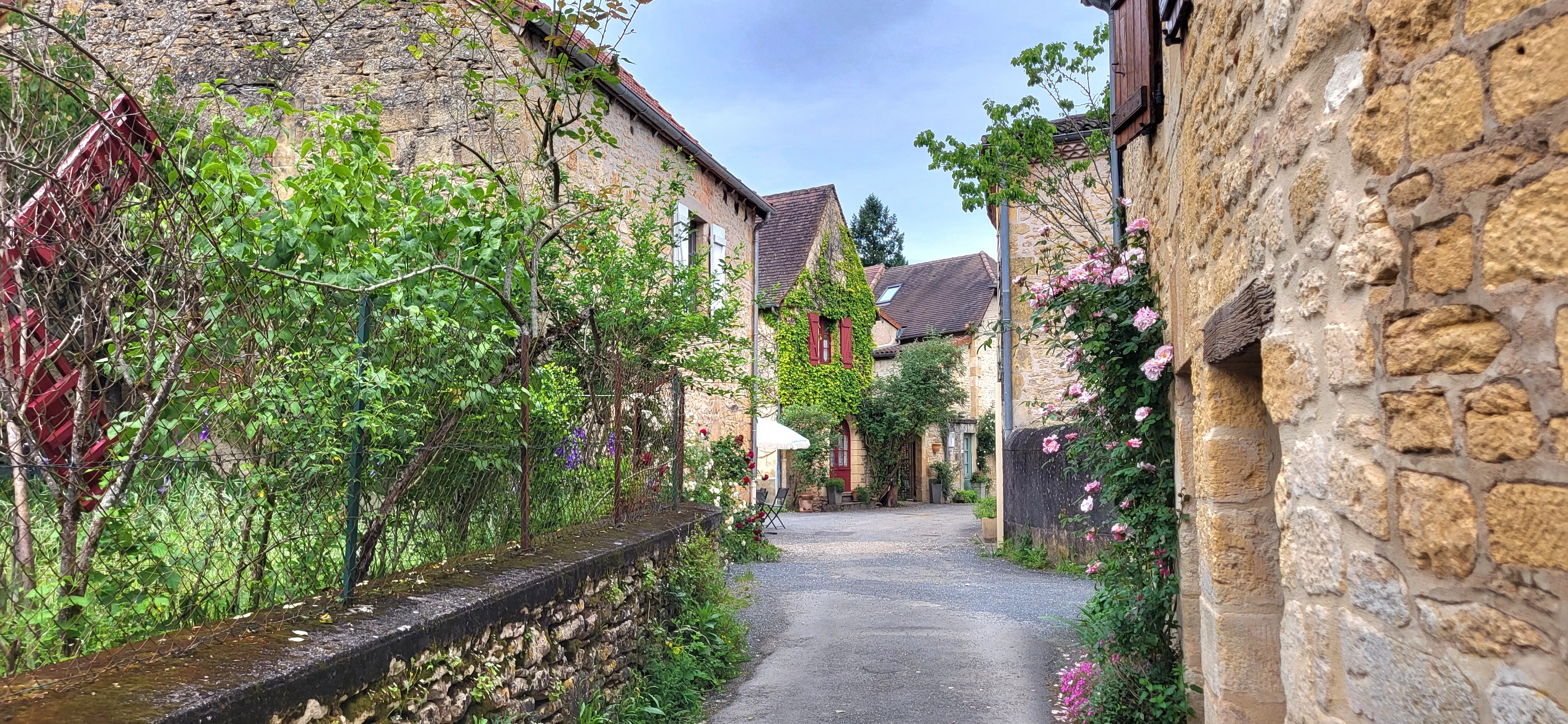 The village of Saint Léon de Vezère, a street. Photo chosen by monsieurdefrance.Com: Jérôme Prod'homme (c)
The village of Saint Léon de Vezère, a street. Photo chosen by monsieurdefrance.Com: Jérôme Prod'homme (c)
Where is it?
Saint Léon sur Vézère is 25 km from Sarlat (31 minutes).
Where is the Périgord Noir?
Périgord is located in the Dordogne department, in the historic region of Aquitaine. Sarlat is 1 hour from Périgueux, 1 hour 50 minutes from Limoges, 2 hours 30 minutes from Bordeaux or Toulouse, and 6 hours from Parisby car. By train, it takes at least 5 hours to get to Paris. By plane, you can land at Brive or Bergerac.

